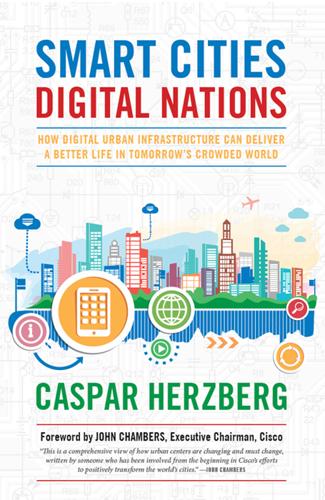
Smart Cities, Digital Nations
by
Caspar Herzberg
Published 13 Apr 2017
The applications and secondary tools plugging into the network—tomorrow or twenty years from now—would make Songdo distinctive, but they would only be as useful as the supporting network was reliable. Nonetheless, Cisco brought game-changing technology to the table. A key component of Songdo’s connectivity would be Cisco’s TelePresence. Initially marketed to corporations that could afford its heavy price tag, this multicamera, state-of-the-art transmission unit creates facsimiles of people that can fool the eye and ear. Marketed as an ideal means to reduce travel costs, NSIC and Cisco took the considerable risk of outfitting all homes in the IBD with a telepresence (TP) screen. Rather than just another appliance (although as ubiquitous as microwave ovens), the TP units hopefully would play a key role in reducing traffic in Songdo.
…
Imagine a world where citizens don’t have to drive laps around a city to find a parking space and instead can monitor the available spots in their neighborhood with a mobile app. Or streetlights that only come on when a person is in the vicinity, saving electricity and costs while also keeping our cities safe. What if there were ways in which citizens could connect with communities around the world via video telepresence equipment, and students could be tutored on Spanish from a teacher based in Spain. This is not the future. This is today. Young cities that have implemented digital capabilities in their master plans serve as the laboratories from which we can glean the challenges and possibilities presented by our technological advances.
…
If your physician has enabled a patient portal through which you can access your records, submit prescription requests, and create appointments, you have benefited, to a small but appreciable effect, from the Internet’s incursion into the medical field. The technology exists to take this process many steps beyond. Doctors can, via telepresence, engage with patients remotely, removing the need for many routine office visits, but also saving small amounts of the patient’s energy, resources, and time. Multiplied by the population of a city, suddenly we are talking about data points that represent huge reductions in energy and congestion.

The Globotics Upheaval: Globalisation, Robotics and the Future of Work
by
Richard Baldwin
Published 10 Jan 2019
While telepresence robots are useful for many interactions, a static form of telepresence technology is transforming the ease of holding meetings over long distances. Fixed Telepresence Systems Telepresence systems—a static version of EmBot, if you will—are already widely used by big banks, consultancies, law firms, and governments. The high-end systems are still expensive. Telepresence rooms can run into the hundreds of thousands of dollars. But as the digital laws advance and construction moves into mass production, telepresence will get much cheaper and more mobile. It will accelerate the trend toward telemigration. Think of standard telepresence as extremely good Skype—but so much better that it becomes a new experience. Telepresence makes it almost seem like people are in the same place even when they are not.
…
Believe it or not, the Heider-Simmel experiment tells us something about why telepresence robots are catching on fast. Many hospitals and some companies use telepresence robots already, and their use is growing rapidly since the impact on team interactions is palpable. The sense of being face-to-face is much stronger when the face moves, so to speak. In particular, doctors find that their words carry more authority with patients when they are talking via a telepresence robot instead of normal video Skype, or over the phone. While telepresence robots are useful for many interactions, a static form of telepresence technology is transforming the ease of holding meetings over long distances.
…
AR and VR are especially helpful in situations where two or more workers have to interact with something physical. But a great deal of work in offices depends upon regular meetings. As it turns out, digitech has created a marvelous substitute to actually being physically in the same room as other workers—it is called a telepresence robot. One company that is using it today is the online media site, Wired.com. TELEPRESENCE ROBOTS Emily Dreyfus writes for the San Francisco company Wired.com but lives in Boston. She used to participate remotely in staff meetings and bilaterals with her editor in the usual twentieth-century way—by phone, messages, and video conferences.

Robot Futures
by
Illah Reza Nourbakhsh
Published 1 Mar 2013
Another essential factor for responsibility lies with government: playing post hoc legal catch-up to the results of emerging technology fails to provide thought leadership on issues of accountability, identity, life-cycle analysis, human rights, and well-being. Every new telepresence and autonomous robot system will challenge the interpretation of our existing body of laws. Cars that drive themselves will crash in unexpected ways; robots caring for a child or the elderly at home will sometimes fail to notice the obvious; telepresent systems will be abused and cause mental distress to distant victims; all manners of robots will be used for crime and malicious acts in as yet undiscovered ways. Instead of reacting case by case to new loopholes in law discovered by ever more ingenious machines, our system of jurisprudence must proactively gather the expertise and wherewithal to predict our robot future, debate the most critical issues of safety, accountability, equity, and quality of life, and create a viable legal framework for this century.
…
More of our personal accessories will have personal initiative, acting on our desires or high-level instructions like a good concierge: working to find and book the right restaurant reservation, rearranging our day, even screening our phone calls based on observations of what we are doing. Perhaps the word “robot” will become confusing since cell phones will behave more robotically, and robots will often be sophisticated telepresence communication devices, enabling us to tuck in a child or visit a work colleague when we are away. Come what may, what we think of today as robotic technology will be far more sophisticated and clever, thanks to ongoing advances in multiple electronically intimate industries. Primer 4: Software Software development in robotics revolves around a storied history of attempts at creating a standardized framework for 38 Chapter 2 programming that would, in theory, gradually raise the capabilities of all robots in a shared and open way.
…
We will argue about a missing utility bill or a problem with the car that the robo-mechanic failed to fix. The machines are about to graduate to a new plane of relationships with us, and we are still busy understanding how a toy robot can twist us. These next-generation robots will be inherently schizophrenic—sometimes autonomous, sometimes telepresent and under the direct control of real people. With all manner of Dehumanizing Robots 63 robots, we will find ourselves entering the same negotiations and arguments that we also do with people, although we will recognize full well that we are dealing with subhumans. This will be new territory in testing our ability, as humans, to flexibly change interaction modalities as we switch the species we are talking to.
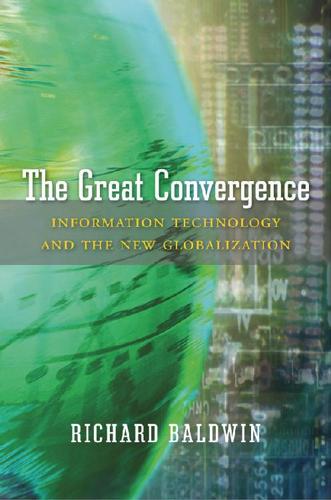
The Great Convergence: Information Technology and the New Globalization
by
Richard Baldwin
Published 14 Nov 2016
The general trend would be for low-skilled workers from developing nations to telecommute to rich nations, and high-skilled workers from rich nations to telecommute to developing nations. For example, experienced German technicians could fix German-made capital equipment in China by controlling sophisticated robots placed in Chinese factories. Telepresence could do the same for brain workers living in developing nations. When telepresence meeting facilities are cheap and portable, and holographic telepresence is widespread, the need for face-to-face meetings will be greatly reduced, even if the need is not eliminated. This will make it much easier to coordinate the provision of brain power at great distances. Given the vast North-South salary differences that exist for engineers, designers, accountants, lawyers, publishers (and let us not forget professors of economics), the ability to fractionalize the production of business services could lead to a great deal of “virtual offshoring.”
…
Globalization’s Next Big Thing: Globalization’s Third Unbundling The three-cascading-constraints narrative—which is summarized graphically in Figure 3—plainly admits the possibility of a third unbundling, if face-to-face costs plunge in the way coordination costs have since the 1990s. Two technological developments might provoke such a plunge. Really good substitutes for people crossing borders to share “brain services” is the first. Such technologies, known as “telepresence,” are not science fiction. They exist today but they are expensive. The second would be the development of really good substitutes for people traveling to provide manual services. This is called “telerobotics” and it involves people in one place operating robots that perform tasks in another place.
…
More specifically, really good ICT is creating reasonable substitutes for in-person meetings. This “virtual presence revolution” is based on high-quality video and audio systems on both ends of what can be thought of as “the telephone wire.” It is—in essence—really, really good Skype. An example is Cisco Systems’ TelePresence. This combines full-size images of participants, using three plasma screens, sound channels, high-precision microphones, custom lighting, and high-definition cameras. Audio is arranged such that the voices of the participants on the “left” (who could be in Mumbai) sound like they are coming from the left.

Mission to Mars: My Vision for Space Exploration
by
Buzz Aldrin
and
Leonard David
Published 1 Apr 2013
More recently, recall the plucky Spirit and Opportunity Mars rovers run by NASA, precursors to the now-on-Mars Curiosity mega-robot. Telepresence, low-latency telerobotics, and human spaceflight are leading to redefining what constitutes an “explorer.” A leading champion of exploration telepresence is Dan Lester of the Department of Astronomy at the University of Texas in Austin. Lester tackles the serious concern about how this strategy meshes with our historical concept of “exploration.” Telepresence may be effective, and it may be cheap, but if it’s not seen as “out there” exploration, it’s not going to take hold.
…
(Illustration Credit 6.4) High-quality telepresence from an Earth-moon Lagrangian point allows a high degree of human cognition and dexterity to be expressed via lunar surface telerobotic surrogates. Lester sees even more significant advantages at Mars, due to the vastly longer two-way latency between Earth and the red planet. Putting humans close enough to an exploration site to ensure cognition—that is, in many respects, what human spaceflight is for. What is more, telepresence/on-orbit telerobotics is not destination specific. We’ll first need to earn our telepresence stripes at the moon and on Mars, using these technologies to explore, scout out mining opportunities, and pre-position habitats without need of on-site, space-suited astronauts.
…
NASA’s Curiosity Mars rover takes a self-portrait. (Illustration Credit 6.3) My close friends Robert Ballard and James Cameron can attest to telepresence-enabled undersea exploration, operating vehicles outfitted with high-definition video cameras, sensors, and manipulator arms—run from a mission control. Teleoperation of underwater equipment is also a routine task performed by those maintaining deep-sea oil rigs. The counterpart in space, albeit showcasing low-quality telepresence, was used decades ago by controllers in the Soviet Union. They wheeled about their automated Lunokhods on the moon. More recently, recall the plucky Spirit and Opportunity Mars rovers run by NASA, precursors to the now-on-Mars Curiosity mega-robot.
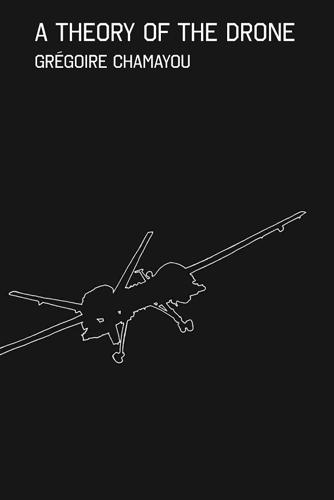
A Theory of the Drone
by
Gregoire Chamayou
Published 23 Apr 2013
The associated thesis is not so much that the feeling of tele-presence is or must be illusory if it is to exist, but rather the following: it is a matter of how the operator’s attention is focused, of how a number of choices are separated out or of a differential prioritization of what is to count as the foreground or the background within a single perceptual field. How can we explain this experience of a shifting point of view? What phenomenological operations underpin it? Loomis provides a convincing explanation of this phenomenon. He thinks that tele-operators “often report a compelling impression of ‘tele-presence’ or ‘remote presence’ ” (Jack M.
…
It is not an epistemic failure but, on the contrary, a pragmatic success. In order to be able to experience a strong sense of telepresence, the subject has to be successful in effectively subsidiarizing not only his consciousness of the instrumental mediation but also that of his own local presence and all the stimuli that affect him in his immediate environment (the chair that is hurting his back, the sounds all around him, and so on). As Loomis writes, “When the stimulation is insufficient to support ‘telepresence’ (the awareness of being somewhere else), the observer experiences ‘subsidiary awareness’ of the actual environment and a ‘focal awareness’ of the remote or simulated environment. . . .
…
In this kind of story, after a description of the initial position of the pilot or teleoperator, which is that of an all-powerful agent, his imminent fall is announced. The human is soon to lose his central position. The drones will become robots. This switch to integral automatism is, we are told, written into the necessary evolution of the device: “in the long term, any step toward tele-presence is a step toward robots,” as Marvin Minsky prophesied in 1980.21 This initial centrality of the subject is followed by the announcement of the death of the subject, who at that point loses what he used to be believed to possess fully, namely control. Therein lies the paradox of this model: although initially radically anthropocentric, it is affected by a movement that inevitably ends up by evicting the human subject.

Machines of Loving Grace: The Quest for Common Ground Between Humans and Robots
by
John Markoff
Published 24 Aug 2015
Technicians are still waiting to conduct a thorough inspection of the damaged plant—and to absorb a year’s allowable dose of radiation in just a few minutes. The cost of repair and the energy losses will be $1 billion; telepresence might have cut this expense to a few million dollars. The big problem today is that nuclear plants are not designed for telepresence. Why? The technology is still too primitive. Furthermore, the plants aren’t even designed to accommodate the installation of advanced telepresence when it becomes available. A vicious circle!6 The absence of wireless networking connectivity was the central barrier to the development of remote-controlled robots at the time.
…
The technology failure at Three Mile Island initially cast a pall over the robotics industry. In the June 1980 issue of Omni magazine, Marvin Minsky wrote a long manifesto calling for the development of telepresence technologies—mobile robots outfitted with video cameras, displays, microphones, and speakers that allow their operator to be “present” from a remote location anywhere in the connected world. Minsky used his manifesto to rail against the shortcomings of the world of robotics: Three Mile Island really needed telepresence. I am appalled by the nuclear industry’s inability to deal with the unexpected. We all saw the absurd inflexibility of present day technology in handling the damage and making repairs to that reactor.
…
This presents a host of new and interesting ways for humans to interact with robots. The iPod and the iPhone were the first examples of this transition as a reimagining of the phonograph and the telephone. Augmented reality would also make the idea of telepresence far more compelling. Two people separated by great distance could gain the illusion of sharing the same space. This would be a radical improvement on today’s videoconferencing and awkward telepresence robots like Scott Hassan’s Beam, which place a human face on a mobile robot. Gary Bradski left the world of robots to join Abovitz’s effort to build what will potentially become the most intimate and powerful augmentation technology.

Beyond: Our Future in Space
by
Chris Impey
Published 12 Apr 2015
All are published by Random House (New York). 10: Remote Sensing 1. “Why Oculus Rift Is the Future of Gaming,” online at http://www.gizmoworld.org/why-oculus-rift-is-the-future-in-gaming/. 2. Intriguingly, telepresence doesn’t have to convey the remote scene with perfect fidelity, because the brain has a tendency to “fill in the blanks” and “smooth out the rough edges” of any representation that is familiar. See “Another Look at ‘Being There’ Experiences in Digital Media: Exploring Connections of Telepresence with Mental Imagery” by I. Rodriguez-Ardura and F. J. Martinez-Lopez 2014. Computers in Human Behavior, vol. 30, pp. 508–18. 3. Brother Assassin by F.
…
Ott, and A. Albu-Schaffer 2013. Proceedings of the 2013 IEEE/RSJ International Conference on Intelligent Robots and Systems, Tokyo, pp. 3043–50. 6. Human Haptic Perception, ed. by M. Grunwald 2008. Berlin: Birkhäuser Verlag. 7. “Telepresence” by M. Minsky 1980, Omni magazine. The magazine is defunct, but the paper can be found online at http://web.media.mit.edu/~minsky/papers/Telepresence.html. 8. Feynman delivered his lecture at the American Physical Society meeting at Caltech on December 29, 1959. A transcript of the talk is online at http://www.zyvex.com/nanotech/feynman.html. He concluded his talk by posing two challenges and offering a prize of $1,000 for each one.
…
If we think of how far video games came in twenty years, from the primitive graphics of Pac-Man to the cartoonish but quasi-realistic 3-D graphics of The Sims, imagine what another twenty years will bring. A hint of that came in 2014 with the release of the Oculus Rift, a gaming helmet that immerses a player in 3-D virtual reality.1 The best sense of the experience is the dramatic opening sequence of the 3-D movie Gravity. The future of Solar System exploration may lie in telepresence, a set of technologies that allow a person to feel that he or she is in a remote location. Videoconferencing is one familiar and simple form of this technology. The market for projecting images and sound to connect meeting participants from around the world is growing 20 percent a year and is worth nearly $5 billion.
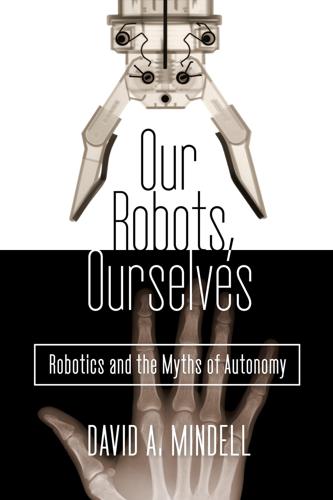
Our Robots, Ourselves: Robotics and the Myths of Autonomy
by
David A. Mindell
Published 12 Oct 2015
What came next was a natural experiment comparing the emotional power of embodied experience to the cognitive power of remote presence. For I was not a native submariner but a robotics engineer. The amount of time I spent physically on the seafloor was dwarfed by the amount of time I spent remotely there, telepresent through the medium of remote robots and fiber-optic cables. My home technology was the remote robot Jason, built and run by the Deep Submergence Laboratory of the Woods Hole Oceanographic Institution (WHOI). The Volkswagen-sized Jason waited out the rough weather lashed to the deck of the Carolyn Chouest.
…
But Ballard had intimate experience with the deep seafloor, developed a vision of remote robotics for that environment, built a laboratory and a team to implement that vision, and led that team on key projects that proved the technological systems. Only now, looking back on his mentorship, do I realize how much his vision of telepresence shaped my own thinking. Ballard originally came to Woods Hole from California in 1966 as a naval officer during the Vietnam era. His father was an engineer who had worked on inertial guidance systems. Ballard’s early jobs were at North American Aviation, studying early submersibles, though he was more interested in the science than the technical details.
…
Here, at his moment of greatest triumph, a moment that would transform his life and career, Ballard used the opportunity to press his vision of remote presence. He maintained that Argo and its cousins under development at Woods Hole represented “a complete revolution” in underwater exploration. “It’s the beginning of telepresence, of being able to project your spirit to the bottom, your eyes, your mind, and being able to leave your body behind. . . . We’ve entered a new era in undersea exploration.” That Titanic was discovered by remote presence, and not by physical human bodies on the seafloor, however, would long be a source of tension within the Woods Hole Oceanographic Institution

Exponential Organizations: Why New Organizations Are Ten Times Better, Faster, and Cheaper Than Yours (And What to Do About It)
by
Salim Ismail
and
Yuri van Geest
Published 17 Oct 2014
Such drag on costs and operations is simply not acceptable in an Exponential Organization—or, indeed, for any company trying to compete in the 21st century. Telepresence has been around for many years in the form of videoconferencing. Although videoconferencing was quite a hassle in the past, an organization can now leverage services such as Skype and Google Hangout, which are fast, easy to use and available on every device. Telepresence enables employees to work proactively from any location and interact on a global scale, reducing travel costs and improving well-being. Even greater improvement comes from Telepresence robots such as Beam, from Suitable Technologies, and Double Robotics, which leverage the user’s tablet.
…
Rangaswami, chief scientist at Salesforce, views social technology as having three key objectives: Reduce the distance between obtaining (and processing) information and decision-making. Migrate from having to look up information to having it flow through your perception. Leverage community to build out ideas. From our perspective, Social Technologies are comprised of seven key elements: Social objects, Activity streams, Task management, File sharing, Telepresence, Virtual worlds and Emotional sensing. When implemented, these elements create transparency and connectedness and, most importantly, lower an organization’s information latency. The ultimate objective is what the Gartner Group calls a zero latency enterprise—that is, a company in which the time between idea, acceptance and implementation all but disappears—and implementing one can provide significant return on investment.
…
Even greater improvement comes from Telepresence robots such as Beam, from Suitable Technologies, and Double Robotics, which leverage the user’s tablet. These robots even allow the user to be on multiple locations at once, which can greatly impact how to conduct business. While Telepresence lets people interact in a real environment, virtual reality allows interaction, collaboration, coordination and even prototyping in a virtual world. Philip Rosedale’s Second Life is one of the best-known examples: “One of the things about Second Life was that it enabled somebody like IBM to basically set up a big get-together with a thousand people from around the world,” he says. Although Second Life didn’t fully meet customer (or investor) expectations and stopped growing after a few years, it has remained consistent, with one million people online every month and an economy of $600 million in transactions.

The Future of the Professions: How Technology Will Transform the Work of Human Experts
by
Richard Susskind
and
Daniel Susskind
Published 24 Aug 2015
Doctors, for example, use telemedicine to consult with their patients, employing traditional methods but from a distance; while religious leaders use online platforms to preach and proselytize without meeting their congregants and possible converts in person. In Chapter 2 there are many other illustrations. Future systems, using ‘telepresence’ techniques (for example, high definition desktop-to-desktop video-conferencing), will provide an experience for both provider and recipient that is greatly superior to current video-conferencing systems. We think of telepresence as ‘Skype on steroids’. Notice, however, that teleprofessionalism is not a fundamental departure from traditional ways of working. The interaction is still real-time and face-to-face (just about).
…
The US Department of Veterans Affairs has a dedicated Office of Telehealth, and used the technology to provide healthcare to over 690,000 veterans in 2014—a particularly disparate group, 55 per cent of whom live in rural areas with limited access to traditional health services.24 In the United Kingdom, the National Health Service in Airedale, West Yorkshire, uses telepresence to provide several hundred care-homes with nurse support and, in a trial, to avoid hospital admissions for 50 per cent of prison inmates.25 Sometimes the devices take an unexpected form—Google, for example, has joined forces with the European drug-maker Novartis to develop a ‘smart contact lens’ to monitor blood-sugar levels, rather than pricking a finger for blood (the traditional way to test for, and manage, diabetes).26 There is a growing ‘mobile health’, or ‘mHealth’, market of tens of thousands of devices, systems, and apps that build on existing mobile technology—basic phones, smartphones, and mobile networks.
…
The first is that ‘professional services involve a high degree of customization’ by human beings, and the second is that ‘most professional services have a strong component of face-to-face interaction with the client’.1 Maister takes these characteristics to be axiomatic; and they certainly appeared to be so a decade ago. Today, however, with the emergence of a very different kind of customization, ‘mass customization’ (where there is no need for human beings, see section 3.7), and of ‘telepresence’ (where there is no need to meet in person, see section 3.3), neither can now be taken for granted. We choose these two examples to highlight a larger point—that the changes sweeping through the professions should urge us to rethink the nature and relevance of this group of occupations whose stability we have long taken for granted. 3.1.

The Peripheral
by
William Gibson
Published 23 Oct 2014
He looked down on the intersection, its wholly predictable absence of movement. Free of crusted salt, drama, atonal windsong. Across Bloomsbury Street, a meter-long mantis in shiny British racing green, with yellow decals, clung to a Queen Anne façade, performing minor maintenance. Some hobbyist was operating it telepresently, he assumed. Something better done by an invisible swarm of assemblers. “She seriously proposed to do this naked,” Rainey said, “and covered in tattoos.” “Hardly covered. You’ve seen the miniatures of her previous skins. That’s covered.” “I’ve managed not to, thank you.” He double-tapped the roof of his mouth, causing the feeds, left and right, from their respective corners of the square, to show him the boss patcher and his cohort of eleven, looking up, unmoving.
…
The Michikoid, Netherton saw, was bringing a chair. “Miss Rainey,” said Lowbeer, “I am Inspector Ainsley Lowbeer, of the Metropolitan Police. You do understand that you are present here, legally, under the Android Avatar Act?” “I do,” said the rental, unenthusiastically. “Canadian law makes certain distinctions, around physically manifested telepresence, which we do not.” Lowbeer took her seat. “Still water,” she said, to the Michikoid. “Best we keep the curtain open,” she said to Netherton, glancing out into the lower level of the market. “Why?” asked Netherton. “Someone may wish you harm, Mr. Netherton.” The rental raised its eyebrows. “Who?”
…
“Across your forehead. First design we roughed out, we would’ve had to shave a two-inch band clear around the back of your head.” “Fuck that.” “Figured you’d feel that way. Got this Japanese stuff instead. Just needs the forehead, use a dab of saline for good measure.” “You said it was a game controller.” “Telepresent interface, no hands.” “You try it?” “Can’t. Nothing to try it on. Your friends have something they want you to operate, but they didn’t want us trying it first. You lie down for it. Otherwise, you might drool.” “What’s that mean?” “If this works, and it should, you’ll be controlling their unit full-body, full range of motion, but your body won’t move as you do it.

I Am a Strange Loop
by
Douglas R. Hofstadter
Published 21 Feb 2011
This scenario is rather bizarre, but I think you can easily see that you will soon start to feel as if you are more in the Indiana kennel, where you are free to move about, than in some Californian ski resort, where you are basically stuck to your seat (because you have your goggles on, hence you can’t see where you’re going, hence you don’t dare venture anywhere). We’ll refer to this sensation of feeling that you are somewhere far from both your body and your brain, thanks to the ultrarapid transmission of data, as “telepresence” (a term invented by Pat Gunkel and popularized by Marvin Minsky around 1980). Telepresence versus “Real” Presence Perhaps my most vivid experience of telepresence occurred when I was typesetting my book Gödel, Escher, Bach. This was back in the late 1970’s, when for an author to do any such thing was unheard of, but I had the good fortune of having access to one of the only two computer typesetting systems in the world at that time, both of which, by coincidence, were located at Stanford.
…
Since I had just spent numberless hours right there, I was easily able to see in my mind’s eye everything that Scott relayed to me, and I remember how disoriented I would feel when, every so often, I remembered that my body was still in Bloomington, for I felt for all the world as if I were in Stanford, working directly at the Imlac terminal. And mind you, this powerful visual sense of telepresence was taking place solely through the sonic modality of a telephone. It was as if my eyes, though in Bloomington, were looking at an Imlac screen in California, thanks to Scott’s eyes and the clarity of his words on the phone. You can call my feeling an “illusion” if you wish, but before you do so, consider how primitive this now-ancient implementation of telepresence was. Today, one can easily imagine turning up all the technological knobs by orders of magnitude. There could be a mobile robot out in California whose movements were under my instantaneous and precise control (the joystick idea again), and whose multimedia “sensory organs” instantly transmitted whatever they picked up to me in Indiana.
…
T tackiness, as familiar but blurry pattern tactile illusion: as hint of wrongness of one-self view; of marble in envelope box, see Epi, marble tail wagging dog tall tale tallness vs. souledness Taoism; see also Zen Tarski, Alfred Tarzan and Jane Tati, Jacques “teetering bulb of dread and dream” (Edson) Teleclones Mark IV and Mark V teleological language: irresistible slide towards, in opaque systems; as shorthand telephone menu tree, droning voices in telephonic telepresence teleportation; goggles giving impression of; to Mars; of thought experiment; to Venus telepresence; via nose-mounted TV cameras; via novel-reading Teletransporters (Parfit) television salesperson temperature: as cause; as emergent tennis-playing Tesler, Larry “the present work”, “the present chapter” theorems: as bottom lines of formal derivations; first, second (etc.) generations of; as meaningful patterns; as meaningless patterns; mirrored by prim numbers theory of computation theory of sets theory of types; self-referentiality of chapter introducing therapy sessions for bereaved spouses thermodynamics vs. statistical mechanics thermostats thinking: ; with another’s brain; essence of; as synonym of consciousness thinkodynamics vs. statistical mentalics thirst: as collective pattern of many beer cans; as one beer can popping up “This formula is not provable” “This formula is provable” “this sentence”, avoidance of indexical phrase “This sentence is false” “thit sentence” Thomas, Dylan “thou” addressed to married couple thought: basic unit of; as dance of simmballs; as dance of symbols; as mere set of habits; as prime mover in brain thought experiments: parameters tweaked in; teleported across Atlantic thoughtmill churned by simms “three three threes” threshold of complexity: for computational universality; for representational universality throwaway analogies, random examples of: between Buzzaround Betty and Hopalong Cassidy; between Cagey and Qéé Dzhii; between car buyers and heart surgeons; between consciousness and a power moonroof; between deconstructing the “I” and deconstructing Santa Claus; between Doug/Carol and a school of fish; between etymology and an X-ray; between exploration of video feedback and sea voyage; between form–content interplay and tail wagging dog; between John Searle and Dylan Thomas; between lack of imagery and lack of oxygen; between people and grasshoppers; between Principia Mathematica and Newton’s Principia; between reading Euclid’s proof and tasting chocolate; between reading “accessible” version of proof of Fermat’s Last Theorem and ordering “Indian hot”; between reverberant barking and a chain reaction; between Roger Sperry and Hopalong Cassidy; between Russell and God; between strange loop of “I”-ness and pearl necklace; between this book and a salad; between tired muscles and soft recruits; between top and bottom of Shell sign; between TV screen and leaf pile; between Twinwirld and Twinnwirrld; between will’s constancy and a gyroscope throwing-away of information time-lapse photography Tinkertoys as substrate for thinking Titanic baby found floating in life raft titles of sections in Reasons and Persons chapter toilet paper and pebbles as substrate for thinking toilets, awareness level of tomatoes as soulless Tomonaga, Sin-Itiro “too marbelous for words” tornado cell, opposing caged-bird metaphor tower of increasingly abstract definitions toy guns, attempted banishment of traffic jam, global explanation for trains: identity of; who vs. that transplanting: a novel to another soil; a soul to another soil transportability, differential, of layers of a self triggering of symbols in brain Treisman, Anne Trenet, Charles Trento, Italy Trojan horse, Gödel’s true statements: Gödel numbers of; logicians’ favorite examples trustability of sources of information Truth and Denotation (Martin) truth: as inexpressible notion using PM notation; preservation of, via rules of inference; presumed to be equivalent to provability in PM; and unprovability perversely entailing each other tu (second-person singular pronoun) addressed to married couple Turing, Alan Mathison Turing machines turkey as “which”, not “who” TV camera: bolted to TV; on long leash; meltdown of; on short leash; universally worn on nose TV screen as meaningless pixel pattern “Twe” (first-pairson pronoun in Twinwirld); tweaking of twildren in Twinwirld Twinwirld; beings in; plausibility of; souls in; twiddling parameters of Twinnwirrld twisty formulas of Principia Mathematica two bodies but one self two twos typeface vs. tale types, rigid hierarchy of typographical patterns mirrorable in number patterns typographical rules of inference; mirrored by computational rules U “Über formal unentscheidbare Sätze der Principia Mathematica und verwandter Systeme (I)” (Gödel, 1931) “umbrella girl” of Morton Salt umlaut in “Gödel” Unbridgeable You–Me Chasm unfathomability of ourselves as good uninteresting integers universal beings; thirst for tastes of alien interiorities universal: machines; music boxes universality of computers; as missed by early computer engineers universality of integers; as missed by early computer engineers; as missed by Whitehead and Russell universality of PM universality, representational, of humans; empathy as by-product of; threshold for Universe Q vs.

Dawn of the New Everything: Encounters With Reality and Virtual Reality
by
Jaron Lanier
Published 21 Nov 2017
It might have been coined by NASA’s Scott Fisher. “Telepresence” used to mean being connected with a robot in such a way that you felt as though you were the robot, or at least that you were in the robot’s location. The community that studied telepresence had started way back in the analog era, well before Ivan Sutherland, or even Alan Turing. Lately it has a broader usage, including Skype-like interactions in VR or mixed reality. “Tele-existence” was coined by the wonderful pioneering Japanese VR researcher Susumu Tachi to include both telepresence and VR. I wish I could remember the precise moment when I started using the term “virtual reality.”
…
* * * Second VR Definition: A simulated new frontier that can evoke a grandiosity recalling the Age of Exploration or the Wild West.6 * * * This book conveys my personal perspective; it doesn’t attempt a comprehensive history or survey of ideas. Even so, I’ll try to be fair. In the case of the earliest display headsets that resemble the ones used in VR, Philco indeed built devices a few years earlier for telepresence (meaning advanced remote control robots), and the wonderful Mort Heilig7 made devices for stereo film viewing—not to mention a number of radical artists who had put TVs in helmets in the fifties as ironic comments on how society was perhaps getting a little too absorbed in the emerging pop culture of TV.
…
People would really see the awfulness of violence, of war, and would not be able to stomach it. Peace would ensue. We shall see. The more intense a communication technology is, the more intensely it can be used to lie. Anyway, Graham has devoted the decades of his life since VPL to easing the lives of children confined to hospitals through the use of telepresence. He found an unambiguous way to use technology to make the world better. AudioSphere Scott Foster engineered VPL’s 3-D sound technology. Since VPL was situated on a marina, it wasn’t unusual for engineers to live on boats and occasionally commute by sail, but Scott is the only one I can remember who commuted by small plane.

Augmented: Life in the Smart Lane
by
Brett King
Published 5 May 2016
Telemedicine robots are also making a huge impact on the future of medicine in hospitals and at home. The first telepresence robot that received FDA approval is being rolled out, literally, in hospitals around the country. The RP-VITA telepresence robot is a joint venture from InTouch Health Systems and iRobot. The ability for healthcare professionals to be able to move around in chaotic environments like hospitals and visit patients regardless of geography is creating efficiencies that will lead to that nostalgic nirvana of doctor house calls. Combine self-driving cars and these types of telepresence robots, and a new paradigm in health care is born as doctorbots can just call an Uber to make 20 to 30 house calls a day.
…
Cameras and sensors in the robot will be able to read the patient’s blood pressure, wakefulness, heart rate, emotional state, etc. At any time, Maria can extend her telepresence into the robot and thereby see through the eyes of the robot and make use of the data from the robot’s sensors. Maria-in-the-robot is now able to check out both qualitative and quantitative data (including a temperature spike, blood pressure drop, an Alzheimer’s episode, etc.) or just do an hourly check-in. Maria can alert a local nurse or have a doctor take over or join her in the telepresence session. Maria can also bring in a family member to the session or update them on their loved one’s condition.
…
A mere 8 per cent survives due to the slow response times of emergency services. An ambulance drone, which flies at 100 kilometres per hour, could be available within minutes to treat such emergencies. Alternatively, a carebot could have heart attack treatment functionality downloaded, or serve as a telepresence unit for a remote on-call doctor. These options could dramatically decrease deaths due to heart attacks, and will probably make heart disease fall below cancer as a source of death by 2018. Figure 4.12: TU Delft’s Ambulance Drone delivering a defibrillator (Credit: TU systems) Companies like Hanson are developing robots that can mimic anyone by scanning your face and getting a 3D print of your face produced.

50 Future Ideas You Really Need to Know
by
Richard Watson
Published 5 Nov 2013
Jobs that don’t yet exist Sensory Internet engineer Virtual currency financial planner Personal avatar designer Generational conflict counselor Human organ farmer Digital information curator Hacker relationship manager Waste data expert Space travel agent Personal reputation consultant Chief privacy officer Vertical farmer Climate reversal consultant Wealth dispersal consultant Retirement travel agent Austerity adviser Intellectual property developer Head of corporate ethics Robot relationship counselor the condensed idea Work will change timeline 2015 Workers bid online for salaries, with jobs going to lowest bidders 2025 Holographic telepresence widely used in meetings 2030 Part-time work redefined as 1,000- or 2,000-hour jobs rather than 40-hour weeks 2035 Onsite childcare and eldercare become commonplace in offices 2040 Organizations start to offer scholarships to children as young as five 2045 Phasing out of formal retirement age for all men and women 2050 Most people work for themselves 30 The pursuit of happiness Politics and economics have historically been dominated by the idea of income and consumption being linked to happiness, especially in the West.
…
What do we really know? On another level, future possibilities include living in a world where almost any manmade device can be accessed, questioned or controlled by thought alone and where communication between individuals, even those geographically distant, is facilitated by a form of mental telepresence or psychic sixth-sense technology. Once again, this probably sounds fanciful. But it’s not impossible. Furthermore, if and when we do enter this realm, a number of questions emerge. The first is how will we know that we really exist in the way that we think we do? Perhaps we’ve always been living inside a computer simulation?
…
If you can predict what people are looking for, why not build avatars that can emotionally bond with people? Impossible? Certainty not. Recording conference calls and virtual meetings is already a practical proposition. And consider this: in 2012 a hologram allowed the dead rapper Tupac Shakur to perform “live” in front of fans with another musician. So using holographic telepresence to be somewhere else, or be in more than one place at once, is a real possibility. Quite where all this will leave human relationships is anyone’s guess. Perhaps we’ll become incapable of directly relating to other human beings unless the relationship is mediated via an avatar or electronic device.

Human + Machine: Reimagining Work in the Age of AI
by
Paul R. Daugherty
and
H. James Wilson
Published 15 Jan 2018
While this might help explain why customers could on occasion have to wait hours (or days) to get their cars fixed, it does little to ease their frustrations. So, what’s the best way to train mechanics, and is there a better way to deploy expert technicians to remote dealerships to minimize customer wait times? Audi found the answer through co-creation in the missing middle. The company deployed a fleet of telepresence robots called Audi Robotic Telepresence (ART) that not only helps train technicians in diagnostics and repair, but also speeds up the time it takes to make repairs in the first place. It’s an example of employee amplification along with AI-enabled training, combined into a whole new process. With ART, the expert technician doesn’t need to travel; instead, his or her voice and face are beamed across miles and emitted from ART’s speakers and high-resolution display.
…
INDEX Accenture, 35, 129, 146, 184–185 acceptance of AI, 131 accountability, 129–130, 169–172 adaptive processes, 5–6, 108–109 mindset for reimagining, 155–160 skills for, 16 advertising, 86, 99 AdWords, 99 AeroFarms, 36 agency, 15, 172–174 agriculture, 34–37, 156–157 Aida, 55–56, 59, 139, 143, 145, 160 Airbus, 144 AI systems as black boxes, 106, 125, 169 collaboration with, 1–2, 25 in corporate functions, 45–66 current state of, 9–11 definition of, 3 deployment of, 208–209 embodied, 21–23 fairness and auditability of, 129 fear of, 126–127, 129, 166–167 framing problems in, 191–193 future of, 209–214 glossary on, 60–66 guardrails with, 168–169 history of, 40–44 human replaced by, 4–5 human roles in developing and deploying, 113–133 humans vs., 7, 19, 106, 207 integration of, 3 modifying outcomes of, 172–174 potential and impact of, 3–4 in production, supply chain, and distribution, 19–39 in R&D, 67–83 responses to, 131–132 scientific method and, 69–77 skills of, 20–21, 105–106 symbiotic partnerships with, 7–8 third wave of, 4–6 training, 100, 114–122 “winters” of, 25, 41 Akshaya Patra, 37 Alexa, 11, 56, 86, 92, 94, 118, 146 Capital One and, 204–205 empathy training for, 117–118 Alexander, Rob, 204–205 algorithm aversion, 167 algorithm forensics analysts, 124–125 Alice, 146 Allgood, Brandon, 81 Almax, 89, 90 Amazon Alexa, 11, 56, 86, 92, 94–95, 118, 146 Echo, 92, 94–95, 164–165 fulfillment at, 31, 150 Go, 160–165 Mechanical Turk, 169 recommendation engine, 92 Amelia, 55–56, 139, 164, 201, 202 amplification, 7, 107, 138–139, 141–143, 176–177 jobs with, 141–143 See also augmentation; missing middle anthropomorphism, brand, 93–94 Antigena, 58 anti-money-laundering (AML) detection, 45–46, 51 Apple, 11, 96–97, 118, 146 Apprenticeship Levy, 202 apprenticing, reciprocal, 12, 201–202 Arizona State University, 49 “Artificial Intelligence, Automation, and the Economy,” 211 Asimov, Isaac, 69, 128–129 assembly lines, 1–2, 4 flexible teams vs., 13–14 AT&T, 188 Audi, 158–160, 190 audio and signal processing, 64 Audi Robotic Telepresence (ART), 159–160 augmentation, 5, 7 customer-aware shops and, 87–90 embodiment and, 147–149 fostering positive experiences with, 166 generative design and, 135–137 of observation, 157–158 types of, 138–140 workforce implications of, 137–138 augmented reality, 143 Autodesk, 3, 136–137, 141 automakers, 116–117, 140 autonomous cars and, 67–68, 166–167, 189, 190 BMW, 1, 4, 10, 149–150 customization among, 147–149 Mercedes-Benz, 4, 10 process reimagination at, 158–160 automation, 5, 19 intelligent, 65 automation ethicists, 130–131 Ayasdi, 178 back-office operations, 10 banking digital lending, 86 fraud detection in, 42 money laundering and, 45–46, 51 virtual assistants in, 55–56 Beiersdorf, 176–177 Benetton, 89 Benioff, Marc, 196 Berg Health, 82 Bezos, Jeff, 161, 164 BHP Billiton Ltd., 28 biases, 121–122, 129–130, 174, 179 biometrics, 65 BlackRock, 122 blockchain, 37 Bloomberg Beta, 195 BMW, 1, 4, 10, 148, 209 Boeing, 28, 143 Boli.io, 196 bot-based empowerment, 12, 186, 195–196 boundaries, 168–169 BQ Zosi, 146 Braga, Leda, 167 brands, 87, 92–94 anthropomorphism of, 93–94 disintermediated, 94–95 personalization and, 96–97 as two-way relationships, 119 Brooks, Rodney, 22, 24 burnout, 187–188 Burns, Ed, 76 business models, 152 business processes.
…
See marketing and sales Salesforce, 85–86, 196 Samsung, 96–97 Samuel, Arthur, 41, 60 scale, 160 Schaefer, Markus, 148 scheduling agents, 196 Schnur, Steve, 194 scientific method, 69–77 hypotheses in, 72–74 observation in, 69–72 testing in, 74–77 SEB, 55–56, 59, 143–145, 160 second wave of business transformation, 5, 19, 47 security, IT, 56–58 semi-supervised learning, 62 Sensabot, 192 sensors in agriculture, 35–37 product development and, 29 retail shopping, 160–165 in robotic arms, 24–26 sentiment tracking, 176 SEW-Eurodrive, 149 Shah, Julie, 120 Shah, Uman, 98 Shannon, Claude, 40 Siemens, 23, 210 Sight Machine, 27 SigOpt, 77 Siri, 11, 96–97, 118, 146 6sense, 92 skills amplification of, 7 developing, 15–16 fusion, 12, 15–16, 181, 183–206 human vs. machine, 20–21, 105–106, 151 in manufacturing, 38 in marketing and sales, 100 in R&D, 83 Slack, 196 smart glasses, 143 smart mirrors, 87–88, 100 social media, 98, 176 software design, AI-enabled, 3 generative design, 135–137, 139, 141 Sophie, 119 SparkCognition, 58 speech recognition, 66 speech to text, 64 Spiegel, Eric, 210 Standup Bot, 196 State Farm, 99 Steele, Billy, 76 Stitch Fix, 110–111, 152, 204 Store No. 8, 162 Summer Olympics, 98 supervised learning, 60 supply chains, 19–39 data, 12, 15 sustaining, 107, 114–115, 179 jobs in, 126–132 See also missing middle S Voice, 96–97 Swedberg, Claire, 31 symbiosis, 7–8 symbol-based systems, 24, 41 Symbotic, 32–33 symmetry, 130 Systematica, 167 task performance training, 116 Tatsu, 196 Tay, 168–169 Taylor, Harriet, 91 telepresence robots, 159 Tempo, 176 Tesla, 67–68, 83, 190 testing, 74–77 Texas Medical Center, 178 Textio, 196 text recognition, 66 third wave transformation, 4–6 adaptive processes in, 19–21 time, rehumanizing, 12, 186–189 time-and-motion analyses, 4 Toyota Research Institute, 166 training/retraining, 15, 107, 114–115, 208 augmentation in, 143 auto technicians, 158–160 crowdsourcing/outsourcing, 120–121 curriculum development for, 178–179 data for, 121–122 education for AI, 132–133 empathy, 117–118 employee willingness toward, 185 feedback loops in, 174 for fusion skills, 211–213 holistic melding and, 200–201 human expertise and, 194–195 interaction modeling, 120 jobs in training AI systems, 100, 114–122 personality, 118–119 reciprocal apprenticing and, 12, 201–202 worldview and localization, 119–120 See also missing middle transparency, 213 transparency analysts, 125 trust of machines vs. humans, 166–168, 172–173 moral crumple zones and, 169–172 Twitter, 168–169 Uber, 44, 95, 169 uncanny valley, 116 Unilever, 51–52 Universal Robotics, 23 University of Ottawa, 70 University of Pennsylvania, 167 University of Pittsburgh Medical Center (UPMC), 188 unmanned vehicles, 28 unsupervised learning, 61–62 US Department of Justice, 45 user interfaces, 140 user needs, discovering, 156 V8, 98 Vallaeys, Frederick, 99 Vectra, 58 vehicle design anthropologists, 113–114 vehicles, autonomous, 67–68, 166–167, 189, 190 Vertesi, Janet, 201 vertical farms, 36 video recognition, 66 Virgin Trains, 47–48, 50, 59 vision.

Virtual Light
by
William Gibson
Published 1 Jan 1993
"You're supposed to take very good care of it. You won't get another." Rydell never actually did meet Wellington Ma, at least not 'til quite a while later, but Karen would bring in a little briefcase with a pair of eyephones on a wire and Rydell could talk with him iii his office in LA. It was the sharpest tele-presence rig Rydell had ever used, and it really did look just like he was right there. He could see out the window to where there was this lopsided pyramid the color of a Noxzema jar. He asked Wellington Ma what that was and Ma said it was the old Design Center, but currently it was a discount mall, and Rydell could go there when he came to L.A., which was going to be soon.
…
And while it was true he wouldn't have known the thing was there, he did know it was there, but pretty soon he forgot about it, almost. They chartered a tilt-rotor to Memphis the next morning and got on Air Magellan to LAX. Business-class mostly meant better gizmos in the seatback in front of you, and Rydell's immediate favorite was a telepresence set you could tune to servo- mounted mollies on the outside of the plane. Karen hated to use the little VirtuFax she carried around in her purse, so she'd gotten on to her office in L.A. and had them download her morning's mail into her seatback display. She got down to that fast, talking on the phone, sending faxes, and leaving Rydell to ooh and ah at the views from the mollies.
…
He'd first seen it by night, three weeks before. He'd stood in fog, amid sellers of fruit and vegetables, their goods spread out on blankets. He'd stared back into the cavern-mouth, heart pounding. Steam was rising from the pots of soup-vendors, beneath a jagged arc of scavenged neon. Everything ran together, blurring, melting in the fog. Telepresence had only hinted at the magic and singularity of the thing, and he'd walked slowly forward, into the neon maw and all that patchwork carnival of scavenged surfaces, in perfect awe. Fairyland. Rain-silvered plywood, broken marble from the walls of forgotten banks, corrugated plastic, polished brass, sequins, painted canvas, mirrors, chrome gone dull and peeling in the salt air.

Heart of the Machine: Our Future in a World of Artificial Emotional Intelligence
by
Richard Yonck
Published 7 Mar 2017
See transcranial direct current stimulation (tDCS) technium, 23 technological evolution “AI-human symbiote,” 264 emotional empathy and, 265–266 and “ end of the world” scenarios, 261–262 and the future, 266–273 intention, 260–261 Matrix scenario, 262–263 peaceful coexistence, 263 technological singularity, 239 technophobia, 29–30 TEDWomen, 175–176 Tega, 118–119 Tegmark, Max, 132 teledildonic devices, 188–189 telepresence, 201 telepresence robots, 151 Terminator scenarios, 242, 262 Terror Management Theory (TMT), 99 Terrorist Surveillance Act (2006), 145 Texas A&M, 127 theory of mind (ToM), 83–84, 131 therapeutic companion robots, 148–150 “Three Laws of Robotics,” 165, 230–233, 262 3D printing, 211 Tilbury, Nancy, 57 TMS.
…
In early 2015 METI published their new five-year government plan, “New Strategy for Robots,” which allocated nearly 5.3 billion yen to the use of robots in the nursing and medicine sector.4 Caretaker robots fall into one of a number of categories: • Rehabilitation robots used for physical therapy purposes, including robo-prosthetics for people with muscular motor issues, such as the loss of muscle control that can occur following a stroke. • Telepresence robots that aid in distance communications, monitoring, and promoting social interaction. • Service robots capable of providing direct care. Some of these robots may carry heavy items or even the patients themselves. Others can act as a form of external memory, helping users remember important items or engage them in exercises that help promote better memory.
…
Already there are a number of companies, such as Vibease and Kiiroo, manufacturing remote haptic vibrators and male masturbators. Adding emotional awareness to these devices and thereby conveying instant information about a lover’s feelings could actually facilitate better connections between partners who have to be apart for extended periods due to circumstances such as a new job or military deployment. Similarly, telepresence will be enhanced by adding a channel for emotional communication. This feature may not appear first for sexual purposes but will almost certainly be quickly appropriated. Already lovers and strangers use phones, Skype, and Facetime for verbal and visual sex play. Adding transmitted feelings in real time will only enhance the experience.

Distrust That Particular Flavor
by
William Gibson
Published 3 Jan 2012
If I were to lose my eyes, I would quite eagerly submit to some sort of surgery promising a video link to the optic nerves (and once there, why not insist on full-channel cable and a Web browser?). The military’s reasons for insertion would likely have something to do with what I suspect is the increasingly archaic job description of “fighter pilot,” or with some other aspect of telepresent combat, in which weapons in the field are remotely controlled by distant operators. At least there’s still a certain macho frisson to be had in the idea of deliberately embedding a tactical shard of glass in one’s head, and surely crazier things have been done in the name of king and country. But if we do do it, I doubt we’ll be doing it for very long, as various models of biological and nanomolecular computing are looming rapidly into view.
…
I wonder now what I knew about robots. That they were called “robots,” and were “mechanical men.” That these particular robots were the servants of Dr. Satan. Did I believe that they were autonomous, or that Dr. Satan controlled them? Probably the latter, as menacing-robot scenes in serials of this sort often involved a sort of telepresence, and the suggestion of remote control. Cut from robot, menacing, to evil scientist in his lab, watching robot menace on television screen. Evil scientist closes giant knife-switch, which causes robot to menace even harder. Given that I was watching this material in the early Fifties, I would shortly become familiar with the expression “electronic brain,” which like “rocket ship” was there as a marker of something anticipated but not yet here.
…
My idea of an efficient robot today would be an American Predator drone with Hellfire missiles, or one of the fly-sized equivalents allegedly on Pentagon CAD-CAM screens, if not already in the field. Though actually those are both cyborgs, or borg-aspects, as they are capable both of autonomous actions and actions via telepresent control. When the human operator uplinks, operator and Predator constitute a cyborg. A friend of mine wrote a short story, a decade ago, in which the protagonists were Soviet equivalents of Predator drones, but literal cyborgs: small fighter aircraft controlled by brain-in-bottle onboard pilots, with very little left in the way of bodies.

Time Travel: A History
by
James Gleick
Published 26 Sep 2016
The aesthetic of futurism changed, too, without anyone issuing a manifesto—from big and bold, primary colors and metallic shine to grim, dank rot and ruins. Genetic engineering and/or species extinctions. Is that all the future we have to look forward to? Nanobots and self-driving cars? Credit 14.1 Card produced c. 1900 by Hildebrands chocolate company If we lack space travel, we do have telepresence. “Present” in this context pertains to space, not to time. Telepresence was born in the 1980s, when remotely controlled cameras and microphones came into their own. Deep sea explorers and bomb squads can project themselves elsewhere—project their souls, their eyes and ears, while the body remains behind. We send robots beyond the planets and inhabit them.
…
We send robots beyond the planets and inhabit them. In the same decade the word virtual, already by then a computer term, began to refer to remote simulations—virtual office, virtual town halls, virtual sex. And, of course, virtual reality. Another way to look at telepresence is that people virtualize themselves. A women finds herself piloting a quadcopter in a slightly creepy “beta of some game”—like a first-person shooter with “nothing to shoot”—and because she is a character in a novel by William Gibson (The Peripheral, 2014) we must already wonder what is virtual and what is real. Her name is Flynne and she seems to live somewhere in the American South—back country, trailer down by the creek.
…
Cyberspace gave him a way in. New rules of time travel: matter cannot escape its time but information can. The future discovers that it can email the past. Then it phones the past. The information flows both ways. Instructions are sent for 3-D fabbing: helmets, goggles, joysticks. It is a marriage of time shifting and telepresence. To the people of the future, the denizens of the past can be employed as “polts” (from poltergeist—“ghosts that move things, I suppose”). Money can be sent or created (win lotteries, manipulate the stock market). Finance has become virtual, after all. Corporations are shells, built of documents and bank accounts.

Smart Cities: Big Data, Civic Hackers, and the Quest for a New Utopia
by
Anthony M. Townsend
Published 29 Sep 2013
In 2011 it released a “Visual Networking Index” that highlighted the coming crush. By “2015, the gigabyte equivalent of all movies ever made will cross global IP networks every 5 minutes,” the company predicted.62 But instead of quenching the fire, Cisco was throwing on fuel. Its multiscreen, high-definition TelePresence videoconferencing systems were selling very well, for hundreds of thousands dollars per unit. Beginning in 2006, it began to experiment on itself to build a business case for the technology, deploying over 250 units in 123 cities worldwide. In 2008 the company announced it had saved $90 million by eliminating travel for nearly 17,500 face-to-face meetings.63 In 2010, it acquired Norway-based Tandberg, a manufacturer of desktop videophones, and cut a deal to install the units in apartments throughout Songdo’s residential quarter.
…
In 2008 the company announced it had saved $90 million by eliminating travel for nearly 17,500 face-to-face meetings.63 In 2010, it acquired Norway-based Tandberg, a manufacturer of desktop videophones, and cut a deal to install the units in apartments throughout Songdo’s residential quarter. Just as it was ramping up production of TelePresence, Cisco was putting its own spin on Songdo’s significance for a rapidly urbanizing China. “Of course I can see you! You’re as big as a wall!” exclaims a venerable Chinese gentleman. In a luminous, light-filled apartment in the Shanghai of 2020, we snoop on a joyous video call between an elderly couple and their friend, discussing the upcoming evening’s reunion for a wedding anniversary celebration.
…
It’s a well-worn cliché that the only people who get rich in a gold rush are the ones selling picks and shovels. But beyond just peddling tools and equipment, if Cisco’s network becomes a true “fourth utility,” all bets are off. Hints of the potential are emerging in Songdo, where the company will install ten thousand TelePresence screens in homes, offices, and schools by 2018. The screens come included with new apartments, and unlimited video calls will cost just $10 per month. But Songdo U.Life—a new joint venture between Cisco, the developer Gale International, and Korean tech giant LG—will also launch a kind of app store, where residents can subscribe to a whole host of new interactive video.

Aerotropolis
by
John D. Kasarda
and
Greg Lindsay
Published 2 Jan 2009
The Dutchman conducts most of his meetings at home via his company’s own telepresence screens. One of his maxims is “Don’t commute to compute.” And yet there he was on the outskirts of Seoul, in town to meet and greet for a week. What happened to telepresence killing the business trip? “The volume of travel won’t decrease,” he conceded cheerfully, “but it will become more efficient. My weekly meetings to go over numbers and projects are conducted via telepresence—why should I fly my folks in for that? But if we’re having a strategy meeting, we have to have dinner, go for walks, take breaks, and be creative. People say that telepresence is killing travel, but it’s not killing it.
…
Technology was going to ground us by linking and shrinking the world, and in doing so set us free. The world would flatten. Road warriors would beat their platinum medallions into plowshares. It hasn’t happened. For twenty years, we’ve heard how e-mail and videoconferencing— relabeled “telepresence”—would eliminate the need for cross-country meetings. AT&T once promised us we could attend them from the beach. “You Will,” it assured us. We don’t. More recently, Cisco has run ads depicting telepresence as a looking glass with China waving to us from the other side. It’s a seductive vision, especially with travel budgets slashed and expense accounts frozen. But new technologies are part of the problem, not the solution.
…
When you add up the Wall posts, status updates, and news bulletins exchanged daily, the number of connections quickly spirals into the trillions. Only a few years ago these weak ties didn’t exist, or at least you couldn’t tug on them. Facebook is the first (and possibly last) tool for keeping tabs on practically everyone you’ve ever met. As far as free-and-easy telepresence goes, it’s unsurpassed. And yet our wanderlust has deepened. The number of air passengers worldwide has risen 83 percent during the Internet years, leveling off only briefly in the face of terror and again under the threat of global financial ruin. Since the invention of the Web, another billion people have taken to the skies each year.

Fall; Or, Dodge in Hell
by
Neal Stephenson
Published 3 Jun 2019
Halfway through the talk, though, the robot stepped forward and walked up the length of the hall to a position where it could get a clearer view. El’s boys woke up and took notice. No one really knew for certain, but it was generally assumed that the robot—a telepresence device meant to serve as the sensorium of a person not physically in attendance—was being controlled from Europe by Elmo Shepherd. Early telepresence robots had just stood there stolidly when not moving, like statues; this one was more elegant. Even when it wasn’t going anywhere it never stopped making minute shifts in its attitude, transferring its weight from foot to foot and turning its head toward sound and movement.
…
The only visitor who managed to avoid this introductory session was El Shepherd. As always, he stayed home in Zelrijk-Aalberg and shipped a telepresence robot to the site. It arrived a day early, hoisted out of the hold of a supply boat along with the resort’s usual supply of beer, broccoli, and laundry detergent. It was in a fetal position with a shipping label stuck to its back, blazoned with the name METATRON. For, having found these devices useful, El had executed a roll-up, purchasing a few companies that had been competing in the telepresence space, merging them into one, and giving them a snappy new brand name. The staff wheeled the Metatron up to the main lodge on a dolly and set it down.
…
Or conversely whether the office itself should be shut down, since most people worked from home now, and meetings happened in a crazy-quilt pseudo-space of real bodies in a room, videoconference, telepresence robots, and augmented reality. But Zula and Corvallis continued to go there almost every day, as if daring each other to be the first to give up on it. The younger Zula’s friends were, the more nervous they were about her way of life. She understood why, of course: they wanted to make sure they got a good scan of her brain when she died, so that she could live forever. This was how people thought nowadays. It wasn’t only cops, soldiers, and firemen who did everything through telepresence. It had been obvious for a long time that certain activities, such as going to the grocery store for a quart of milk, weren’t worth the effort of leaving the house, parking the car, and waiting in the checkout lane.

You Are Not a Gadget
by
Jaron Lanier
Published 12 Jan 2010
The performance might feel “present” in your house if you had immersive, “holographic” projectors in your living room. Imagine telepresent actors, orators, puppeteers, and dancers delivering real-time interactive shows that include special effects and production values surpassing those of today’s most expensive movies. For instance, a puppeteer for a child’s birthday party might take children on a magical journey through a unique immersive fantasy world designed by the performer. This design would provide performers with an offering that could be delivered reasonably because they wouldn’t have to travel. Telepresent performance would also provide a value to customers that file sharing could not offer.
…
Without the software, the experience would not exist at all, so I celebrate that software, as flawed as it is. But it’s not as if the forum would really get much better if the software improved. Focusing too much on the software might even make things worse by shifting the focus from the people. There is huge room for improvement in digital technologies overall. I would love to have telepresence sessions with distant oudists, for instance. But once you have the basics of a given technological leap in place, it’s always important to step back and focus on the people for a while. * The Bible can serve as a prototypical example. Like Wikipedia, the Bible’s authorship was shared, largely anonymous, and cumulative, and the obscurity of the individual authors served to create an oracle-like ambience for the document as “the literal word of God.”

Rise of the Robots: Technology and the Threat of a Jobless Future
by
Martin Ford
Published 4 May 2015
By the same token, it is easy to envision remote-controlled machinery being operated by offshore workers who provide the visual perception and dexterity that, for the time being, continues to elude autonomous robots. A need for face-to-face interaction is another factor that is assumed to anchor a job locally. However, telepresence robots are pushing the frontier in this area and have already been used to offshore English language instruction from Korean schools to the Philippines. In the not too distant future, advanced virtual reality environments will likewise make it even easier for workers to move seamlessly across national borders and engage directly with customers or clients.
…
The suits lease for just under $2,000 per year and are already in use at over three hundred Japanese hospitals and nursing homes.21 Other near-term developments will probably include robotic walkers to assist in mobility and inexpensive robots capable of bringing medicine, providing a glass of water, or retrieving commonly misplaced items like eyeglasses. (This would likely be done by attaching RFID tags to the items.) Robots that can help track and monitor people with dementia are also appearing. Telepresence robots that allow doctors or caretakers to interact with patients remotely are already in use in some hospitals and care facilities. Devices of this type are relatively easy to develop because they skirt around the challenge of dexterity. The near-term nursing-care robotics story is primarily going to be about machines that assist, monitor, or enable communication.
…
Medtronic, Inc., 150n risk, Peltzman effect and, 267–268 RoboBusiness conference/tradeshow, 7 Robot & Frank (film), 155 robotics, 6–8 cloud, 20–23 See also automation; robots robotic walkers, 157 robots in agriculture, 23–26 box-moving, 1–2, 5–6 consumer, 197n educational, 7 elder-care, 155–158 hospital and pharmacy, 153–155 industrial, 1–5, 10–11 personal, 7 telepresence, 119–120, 157 Rolling Stone (magazine), 56 Romney, Mitt, 272 Roosevelt, Franklin, 279 Rosenthal, Elisabeth, 160, 163 Rosenwald, Michael, 107 ROS (Robot Operating System), 6, 7 Russell, Stuart, 229 Rutter, Brad, 101 Sachs, Jeffrey, 60 Saez, Emmanuel, 46 safety, autonomous cars and, 184–185, 187 Salesforce.com, 134 Samsung Electronics, 70n Samuelson, Paul, x Sand, Benjamin M., 127 San Jose State University, 134 Sankai, Yoshiyuki, 156–157 Santelli, Rick, 170 savings, China’s high rate of, 224–225 SBTC.
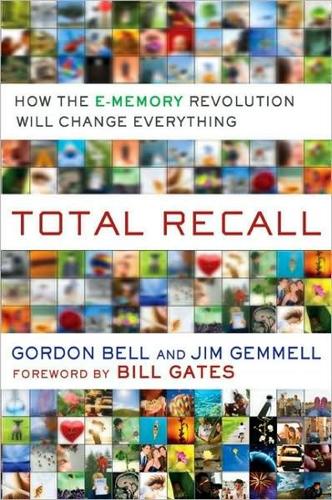
Total Recall: How the E-Memory Revolution Will Change Everything
by
Gordon Bell
and
Jim Gemmell
Published 15 Feb 2009
He is one of the true pioneers in computing and it would be almost impossible to overstate the importance of his contributions to progress in this industry, whether it was through his role building the first minicomputers at DEC 1960s and 1970s; his involvement as head of the National Science Foundation’s information-superhighway initiative; or the work he has done at Microsoft since 1995 on telepresence and telecomputing. He is also one of the industry’s most important original thinkers, not only about how to advance the state of the art of digital technology, but also about the role that technology plays in society and in people’s lives. I have so much admiration and respect for the depth of Gordon’s thinking and the quality of his work.
…
Aerial imagery of the world was brought to the Internet by the BARC Terra Server, which led to the Microsoft Live Maps site and predated Google maps by five years. Later, Jim would turn the view up to the heavens, and work on the Sky Server project. His broad agenda got him involved in such far-flung projects as the “land speed record” for network transmission and fail-safe databases. Meanwhile, Gemmell and I were working on telepresence: putting a conference on the Web, playing with altering someone’s gaze direction in video, and shipping new network protocols in Microsoft operating systems. Later, of course, we got into MyLifeBits. A memorable event was in May 1997, when Jim gave an on-stage demo with Bill Gates, using more than a hundred PCs to achieve one billion transactions per day.
…
CyberAll aka MyLifeBits Research i) Papers, patents ii) Presentations iii) Project plans iv) Hardware (eBook, SenseCam, et cetera) v) Conferences and other papers vi) Classification, facets, metadata vii) Database viii) This book c. Media-in-the-home research d. Telepresence research e. Systems of all kinds, chips to supers f. Other active company and organizational (companies, government, schools) g. GB in process books and papers h. GB family financial and legal i) CYxx or FYxx: Yearly bank, brokerage, expense, receipt, detailed tax, statements ii) Investments iii) Money and historical transactions iv) Property 1.

The Transhumanist Reader
by
Max More
and
Natasha Vita-More
Published 4 Mar 2013
The visible universe, with 1011 galaxies, would then have room for 1051 cities – except that by the time intelligence has expanded that far, more efficient ways of using spacetime and encoding data would surely have been discovered, increasing the number much further. Mind without Body? Start with the concepts of telepresence and virtual reality. You wear a harness that, with optical, acoustical, mechanical and chemical devices, controls all that you sense, and measures all of your actions. Its machinery presents pictures to your eyes, sounds to your ears, pressures and temperatures to your skin, forces to your muscles, and even smells and tastes for the remaining senses. Telepresence results when the inputs and outputs of this harness connect to a distant machine that looks like a humanoid robot.
…
One might imagine a hybrid system where a virtual “central station” is surrounded by portals that open on to views of multiplereal locations. While in the station one inhabits a simulated body, but when one steps through a portal, the harness link is seamlessly switched from the simulation to a telepresence robot waiting at that location. The technical challenges limit the availability, “fidelity,” and affordability of telepresence and virtual reality systems today – in fact, they exist only in a few highly experimental demonstrations. But progress is being made, and it’s possible to anticipate a time, a few decades hence, when people spend more time in remote and virtual realities than in their immediate surroundings, just as today most of us spend more time in artificial indoor surroundings than in the great outdoors.
…
After 12 hours in a sensory deprivation tank (where one floats in a body-temperature saline solution that produces almost no skin sensation, in total darkness and silence, with taste and smell and the sensations of breathing minimized) a subject will begin to hallucinate, as the mind, somewhat like a television tuned to a nonexistent channel, turns up the amplification, desperately looking for a signal, becoming ever less discriminating in the theories it offers to make sense of the random sensory hiss it receives. Even the most extreme telepresence and virtual reality scenarios we have presented avoid complete bodylessness by always providing the mind with a consistent sensory (and motor) image, obtained from an actual remote robot body, or from a computer simulation. In those scenarios, a person may sometimes exist without a physical body, but never without the illusion of having one.
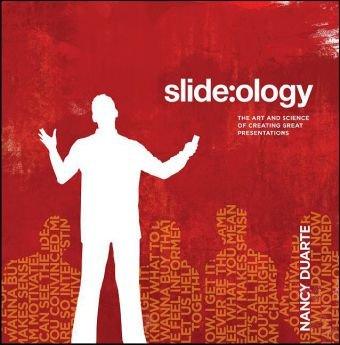
Slide:ology: the art and science of creating great presentations
by
Nancy Duarte
Published 15 Nov 2008
What messages do they need to hear from Cisco’s executive team? What’s the call to action? Once the context is determined, the team works to develop a storyline and message. Justice’s story development team works in a presentation command center decked out with all the latest technology, including Cisco’s TelePresence, a digital whiteboard and multiple screens for the many collaborators using laptops. His gutsy approach centers on trying innovative new ideas and employing technologies that communicate his message in a way that resonates with the audience. “In most cases,” says Justice, “I’ve got a few thousand people in the audience and just one chance to capture their imaginations by showing them something they’ve never seen before while ensuring the content is relevant and inspiring to them.”
…
See animations in effective slides, 88 time-based scenes, 180–181 Mozilla, 37, 164 multidirectional flow in diagrams, 47 N natural movement in animations, 189 270 nature, design guidelines from, 109–110 neutral colors, 136 Newton, Isaac, 128–129 noise in slides, 88 O open space in backgrounds, 118–119 order, space proximity for, 104 ordering information, 96–97 Ortberg, John, 242–243 overlapping clusters in diagrams, 50 overlays, hand-drawn, 167 owning images, 165 P paintbrush line texture, 166 palettes assembling, 136–137 choosing, 132–133 harmonious, 128–129 industry, 134–135 limiting, 138–139 power of, 130–131 panoramas, 190–191 paper and pencil, 26–27 paper handouts, 240 paragraph spacing, 148 parallel structure for bullets, 151 parent-child relationship, 99 pastels, 133 path-based animation, 189 pauses in presentations, 230 Pecha Kucha, 226, 228–229 pen line texture, 166 pencil and paper, 26–27 people proximity, 105 percentages on pie charts, 71 personas of audience, 16–17 perspective for backgrounds, 121 for information flow, 96 photographs, 79 families of images, 160 focus in, 162–163 healthcare, 174–175 rule of thirds, 161 taking, 164–165 pictorial concepts in diagrams, 54–55 pie charts guidelines, 77 uses, 71 Pink, Dan, 238–239 placement of elements, 92–93 case study, 108–109 contrast, 94–95 flow, 96–97 grids, 100–103 hierarchy, 98–99 natural guidelines, 109–110 proximity, 104–105 unity, 100–101 whitespace, 106–107 point size, 142 points, radiation from, 52 Post, Dan, 175–176 Post-It notes, 28–29 power points in images, 161 Powerful Presenter, 151 PowerPoint color wheel, 128, 132 default templates, 144 push transitions, 190 PowerPoint Phluff, 74 presence, creating, 19 Presentation Survival Skills Guide, 10 Presentation Zen, 89, 108–109, 219 Presenting to Win, 96 process concept in pictorials, 54 Procter & Gamble, 82 Proehl, Andy, 228–229 profiles of audience, 16–17 projection, deciding on, 240–241 projectors color contrast for, 135 constraining, 230–231 props, 241 proximity contrast in, 94 for hierarchy, 99 meaning from, 104–105 public speaking, fear of, 232 push transitions, 22, 190, 192–193 Q quantity, slides, 234-239 quick cuts, 183 R radiate concept in diagrams, 52–53 rag, 149 Rand, Paul, 95 Rare organization, 198–199 readability size for, 240 text, 143 reading patterns, 96–97 realistic concepts in diagrams display data, 56–57 271 pictorial, 54–55 Really Bad PowerPoint, 6 record, 221 reducing slide content, 221 text, 224–225 references, 262–263 reflections for backgrounds, 124–125 relationships with audience, 14–15, 248–249 color, 128–129 cultivating, 261 hierarchy of elements, 98–99 movement for, 185 repetition, 221 reveal concept pictorials, 54 text, 145–146 Reynolds, Garr, 6, 89, 108–109, 219, 238–239 Roman Room method, 222–223 rule of thirds, 161 S safe water presentation, 245 sans serif fonts, 143 scaling animations, 189 images, 172 scenes in animations, 190–193 school district presentation, 162–163 screenwriters, 186 sense of space in backgrounds, 118, 122–123 sequence, movement for, 185 serif fonts, 142–143 shades color wheel, 128–129 272 contrast in, 94 shadows in backgrounds, 120–121, 124–125 shape, contrast in, 94 Sharpie pens, 28 Silk Road, 229 simplicity for cross-culture communication, 37 in data slides, 74–75 and sticky notes, 28 size contrast in, 94 fonts, 152–153, 234 for hierarchy, 98–99 for information flow, 96 text, 95 sketchbooks, 44 sketching complete ideas, 40–41 diagrams, 38–39 live, 30–31 slide sorter view, 152 SlideShare.net site, 238–239 slideuments, 6–7, 144 slow moving animation, 183 small devices, 244–245 SmartAccess product, 196–197 social networks, 241 soft returns, 148 soft shadows, 125 space proximity, 104 spacing kerning and letterspacing, 147 paragraph, 148 splash animations, 154–155 split complementary color, 131 spreading ideas, 255 information across slides, 107 stage, actors on, 105 starting points in information flow, 96 statistics, illustrating, 79 stick figure drawings, 32–33 sticky notes, 28–29 storyboarding for animations, 182 sketching, 32–33 straight lines, 166 stroke presentation, 246–247 structure in diagrams, 48–49 unity in, 100–103 stylizing illustrations and diagrams, 172–173 sub-bullets, 148, 151 surfaces, backgrounds as, 116, 118–119 synchronizing animations, 183 system diagrams, 58 system images, 160 T Tahoma font, 143 Target, 82 teachers, presentation for, 162–163 TED (Technology, Entertainment, Design) TED conference, 244–247 videos online, 226 TelePresence system, 19 teleprompters, slides as, 7 templates for branding, 208–209 for collaboration, 214–215 design decisions, 206–207 experimenting with, 210–211 Google Docs, 214-215 guidelines, 212–213 PowerPoint, 144 for workforce, 204–205 Templeton, Mark, 8–9 tetradic color scheme, 131 text bullets, 150–151 constraining, 220–221 contrast, 95 font size, 152–153 fonts, 142–143 hierarchy, 98 isolating, 79 overview, 140–141 reducing, 224–225 revealing, 145–146 typesetting, 146–149 word counts on slides, 144–145 texture of illustration lines, 166 theatre, actor proximity in, 105 thinking like designers, 83 third dimension in animations, 189 three-column grid patterns, 101 three R's of letting go, 221 time-based scenes, 180–181 time requirements for presentation development, 12–13 Times New Roman font, 143 tints in color wheel, 128–129 titles in templates, 207 text, 98 title case, 151 two-line, 144 tracking, 147 transitions 273 color-coded slides, 163 fade, 195 push, 22, 190, 192–193 trees in diagrams, 48 trends in display data, 56 triadic color, 131 truth in data slides, 66–67 Tufte, Edward, 67, 74, 95 Twain, Mark, 190 two-line titles, 144 typesetting, 140–141 blocks, 148–149 overview, 146–147 U unity space proximity for, 104 in structure, 100–101 V Van Sijll, Jennifer, 186–187 Vanderbilt University, 30 vanishing points in backgrounds, 120–123 venture capitalists, 234 venue size, color for, 132 verbs, revelations through, 84–85 vertical bar charts, 77 vertical organization of data charts, 97 video format, 240 video slides, 175–176 visual breathing room, 106–107 visual elements animation.
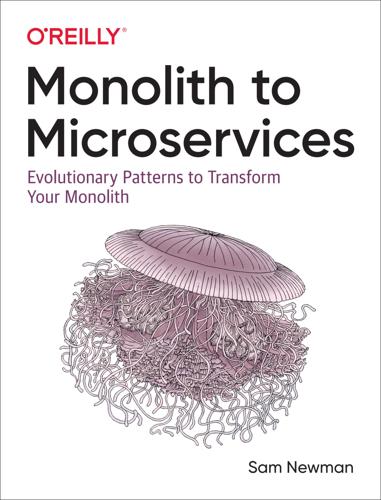
Monolith to Microservices: Evolutionary Patterns to Transform Your Monolith
by
Sam Newman
Published 14 Nov 2019
However, with that comes associated challenges of needing connectivity (which can be a problem for remote workers or frequent travelers), potentially having slower feedback cycles with the need to deploy software remotely before you can see it working, and a potential explosion in resources (and associated costs) needed for developer environments. Telepresence is an example of a tool that is aiming to make a hybrid local/remote developer workflow easier for Kubernetes users. You can develop your service locally, but Telepresence can proxy calls to other services to a remote cluster, allowing you (hopefully) the best of both worlds. Azure’s cloud functions can be run locally too, but connected to remote cloud resources, allowing you to create services made out of functions with a fast local developer workflow, while still having them run against a potentially extensive cloud environment.
…
organization of, three-tiered architecture reflecting, Modeled Around a Business Domain qualitative measures of transition success, Qualitative Measures reorganizing for transition to microservices, Reorganizing Teams-Changing Skillschanging skills, Changing Skills deciding where to start, Making a Change no one-size-fits-all, It’s Not One Size Fits All shifting structures, Shifting Structures scaling number of developers, Scale the Number of Developers technical-oriented services, switch to modeling around business functionality, Shifting Structures technologychanging to better handle load, How else could you do this? deciding when to change technology when using microservices, Technology embracing new technology using microservices, Embrace New Technology embracing new technology without using microservices, How else could you do this? Telepresence, Potential Solutions temporal coupling, Temporal coupling testingend-to-end testing of microservices, End-to-End Testing-Continually refine your quality feedback cycles in production, Test in production integration of test teams into other teams, Shifting Structures third-party monoliths, Third-Party Black-Box Systems time to market, improvingusing microservices, Reduce Time to Market without adopting microservices, How else could you do this?

The Second Machine Age: Work, Progress, and Prosperity in a Time of Brilliant Technologies
by
Erik Brynjolfsson
and
Andrew McAfee
Published 20 Jan 2014
As a final example of recent robotic progress, consider the Double, which is about as different from the BigDog as possible. Instead of trotting through rough enemy terrain, the Double rolls over cubicle carpets and hospital hallways carrying an iPad. It’s essentially an upside-down pendulum with motorized wheels at the bottom and a tablet at the top of a four- to five-foot stick. The Double provides telepresence—it lets the operator ‘walk around’ a distant building and see and hear what’s going on. The camera, microphone, and screen of the iPad serve as the eyes, ears, and face of the operator, who sees and hears what the iPad sees and hears. The Double itself acts as the legs, transporting the whole assembly around in response to commands from the operator.
…
The first batch of Doubles, priced at $2,499, sold out soon after the technology was announced in the fall of 2012.32 The next round of robotic innovation might put the biggest dent in Moravec’s paradox ever. In 2012 DARPA announced another Grand Challenge; instead of autonomous cars, this one was about automatons. The DARPA Robotics Challenge (DRC) combined tool use, mobility, sensing, telepresence, and many other long-standing challenges in the field. According to the website of the agency’s Tactical Technology Office, The primary technical goal of the DRC is to develop ground robots capable of executing complex tasks in dangerous, degraded, human-engineered environments. Competitors in the DRC are expected to focus on robots that can use standard tools and equipment commonly available in human environments, ranging from hand tools to vehicles, with an emphasis on adaptability to tools with diverse specifications.33 With the DRC, DARPA is asking the robotics community to build and demonstrate high-functioning humanoid robots by the end of 2014.
…
Demographic and Health Surveys Dershowitz, Alan developing world: effect of automation on productivity improvement in technology in Diamond, Peter digitization: beneficial effects of of books bounty created by challenges of competitive effects of constraints in economic consequences of; see also bounty; goods, digital, economics of; spread economic data made available by economic properties of in education executive pay linked to as general purpose technology innovation debate about labor complements to labor market effects of; see also “winner-take-all” markets logarithmic scaling of market domination due to; see also “winner-take-all” markets metrics of network effects in niche services created by physical goods’ improvement and and Pigovian taxes rapid progress in; see also technological progress recombinant innovation and scientific benefits of ubiquity of wealth associated with; see also superstars see also global digital network; second machine age Doerr, John Donner, Jan Hein Dorn, David Double, telepresence provided by Double Robotics Drive (Pink) driving: digitization of see also Google driverless car Dropbox Dyer, Jeffrey Dyson, Freeman Earned Income Tax Credit (EITC) Eastman, George Eastman Kodak economic growth: acceleration of debates concerning effects of employment linked to government role in limitations on recombinant innovation and and tax rates see also gross domestic product (GDP); productivity economic rents economics, common ground in Economics: An Introductory Analysis (Samuelson) Economist Edison, Thomas education college feedback in inequality and teacher salaries and accountability in technology in Einstein, Albert Eisenhower, Dwight electrical power Electronics El-Ouazzane, Remi e-mail empires employment: benefits of of college graduates and entrepreneurship globalization and historical data on productivity decoupled from searching for technological implications for see also labor Encyclopaedia Britannica energy: demand elasticity for falling prices in Engadget engineering entrepreneurship Europe, productivity improvement in European Union exponential growth eyes: digital see also vision, computer-aided Facebook factor price equalization Fairlie, Robert FDA fiber-optic cable Field, Alexander Final Jeopardy!

Broad Band: The Untold Story of the Women Who Made the Internet
by
Claire L. Evans
Published 6 Mar 2018
PURPLE MOON In 1992, Brenda got a job at Interval Research, a Palo Alto think tank funded by Microsoft cofounder Paul Allen. Interval was all R and very little D: researchers wandered into the weeds studying technologies that were still far from being commonplace, like telepresence and interactive video. Brenda had just come in from the weeds herself. She’d founded a virtual reality company, Telepresence Research, that had folded within a year. She often calls herself a member of the “Crash Test Dummy Club,” those breakneck dreamers who try to make things before they’re economically feasible. It’s an “uncomfortable but fine, wild ride,” she says.
…
J., 150 Smithsonian Institution, 62 Snyder, Elizabeth “Betty,” see Holberton, Elizabeth “Betty” social media, 97, 137, 139–41, 148, 149, 151, 152, 201, 207, 210, 241, 242 Facebook, 139, 141, 148, 149, 151, 210 Reddit, 149 Twitter, 149, 150, 151 Social Services Referral Directory, 105–7, 215 Sodoeka, Yoshi, 193 software, 56, 74, 88, 94, 132, 163 crisis in, 76–78 distinction between hardware and, 33 women and, 51–52 see also programming software engineering, use of term, 77–78, 93 Somerville, Mary, 16, 21 Space Task Force, 24 spanning-tree protocol, 126–28 Speiser, Jane, 99–100 Stahl, Mary, 114, 118, 120, 122 Stanford University, 110, 153, 154 Augmentation Research Center at, 111–12, 116 Starrs, Josephine, 237 Stevenson, Adlai, 60 stock market crash, 198–200, 201 Stone, Allucquére Rosanne, 143 subroutines, 37 Suck.com, 194, 201–2 Sun Link Service, 162 Sun Microsystems, 161, 162, 210 Sutton, Jo, 239 Switchboards, 97–98, 100, 101, 105 Symbolics, 161, 162 Symbolics Document Examiner, 162 system administrators (sysops), 130, 131 Talmud, 154 Tandy, 225 Tannenbaum, Rob, 137 telephone companies, 24 Telepresence Research, 227 Teletype machines, 101, 105, 106 Telluride InfoZone, 131 telnet, 151–52 Terminal, 151–52 textile looms, 11–13, 20 Tierney, Gertrude, 73 Time, 233 Tomb Raider, 236 TransAmerica Leasing Corporation, 98, 99 trans experience, 143–44 Embraceable Ewe and, 142, 144 Turkle, Sherry, 223, 229 Twitter, 149, 150, 151 United States Naval Observatory, 9–10 United Way, 106 UNIVAC (Universal Automatic Computer), 57–63, 65, 66, 67, 73 C-10 code for, 58–59 University of California, Berkeley, 97, 110 University of California, Los Angeles (UCLA), 110 University of Michigan, 157 University of Pennsylvania, 69–70 Moore School of Electrical Engineering, 37–42, 47, 48, 50, 54–56 University of Southampton, 157–59, 160 Web Science Institute, 171, 173 Unix, 135–36, 152 URLs, 215 Utopian Entrepreneur (Laurel), 235 Van Meter, Jonathan, 188, 189 Viacom, 186, 192 VIBE, 188 video games, see computer games VIKI, 166, 170 Village Voice, 136, 183, 184 Virtual Community, The: Homesteading on the Electronic Frontier (Rheingold), 148–49 virtual reality, 227–28 VNS Matrix, 237–40, 242 Volkart, Yvonne, 240 von Neumann, John, 36 Walcott, James, 137 Walker, Janet, 162 Wall Street Journal, 220, 221 Watson, Patty Jo, 91–92 Watson, Richard, 88 Watson, Thomas, Jr., 60 Web: use of word, 153 see also World Wide Web Web sites and pages, 131, 135, 153, 154, 184, 186 life spans of, 170 for women, see women’s Web see also World Wide Web WELL, The, 132–35, 140, 149, 153, 179–80, 205–6, 209 Wellington, Arthur Wellesley, Duke of, 16 Wescoff, Marlyn, 39, 43, 48, 49 Westheimer, Ellen, 114 WHOIS, 119–20 Whole Earth Catalog, 100, 132 Whole Earth Review, 132, 183 Wilcox, Patricia (Pat Crowther), 84–94, 110 William the Conqueror, 155 Wired, 138, 194, 206 women, 4–5 computers as viewed by, 229 men posing as, 143–44, 179 and software vs. hardware, 51–52 women, working, 23–24 black, 24 wage discrimination and, 23, 77, 78 women.com, 205, 214–21 Women in Telecommunications (WIT), 141–42, 144, 205 Women’s Internet History Project, 143 Women’space, 239 women’s Web, 131, 216, 221, 223, 233 advertising and, 214–16, 218, 219, 221 iVillage, 214, 216–21 women.com, 205, 214–21 Women’s WIRE, 205–15 Women’s WIRE, 205–15 Woods, Don, 90 Word, 188–95, 201–3, 205, 214, 215 Works Progress Administration, 25 World War I, 24 World War II, 24, 25, 28–29, 31, 32, 34–37, 40, 45, 47, 50, 51, 53–55 atomic bomb in, 36 Pearl Harbor attack, 27–29, 32 World Wide Web, 102, 131, 152, 154, 159, 165, 168–72, 177, 203, 204, 222 browsers for, see browsers commercialization of, 204–5, 217, 241; see also advertising conferences on, 170, 173 early true believers and, 187–88, 196, 197, 202 hypertext and, 168–70, 201 links on, 168–70, 201 Microcosm viewer for, 172–73 number of women on, 214 search engines for, 115, 154 Semantic Web and, 174 see also Internet; Web sites and pages Xerox, 161 Xerox PARC, 162–66, 210 Y2K, 71, 194 Yankelovich, Nicole, 162 Zapata Corporation, 194, 201 Zeroes + Ones (Plant), 238 About the Author CLAIRE L.
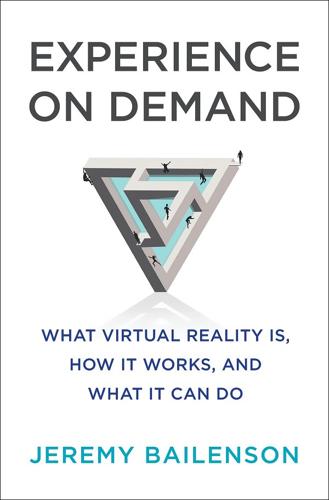
Experience on Demand: What Virtual Reality Is, How It Works, and What It Can Do
by
Jeremy Bailenson
Published 30 Jan 2018
Physical contact is a major part of how he communicates, and his job depends on successfully delivering a message of trustworthiness and competence. Business executives like Bagai will take a lot of convincing before they abandon face-to-face meetings for virtual reality telepresence. He may be able to convey his impressive medical knowledge, keen ability to present scientific data, and forward-thinking vision over a monitor, but charisma and trustworthiness are still best shared in person, over a dinner or drink. If virtual travel and telepresence is going to replace physical travel, it will have to devise a system that allows a virtual version of Shaun Bagai to be just as warm and charismatic as his physical self.
…
See also VR storytelling emotional, 213 teaching and, 238 “storyworlding,” 225 Stott, Nicole, 110 STRIVR, 18, 33, 34, 35, 39, 40, 101, 236 Stromberg, Robert, 218–19, 223 “There,” 219 Super Outbreak, 121–22 Supreme Court, 65, 259 “Surgeon Simulator,” 63 surgeries, 153 Sutherland, Ivan, 226 “The Ultimate Display,” 245 “synchrony score,” 184 Syrian crisis, 76–77 Taco Bell, 9 tai chi, 26–27 teachers, VR education and, 242–44 teaching, storytelling and, 238 technology, filmmaking and, 215–16 teleconferencing, 179, 183, 198–99 “Teleport” method, 256–57 telepresence, 176–80 television, 206 children’s programming, 228–32 3D television, 64–65, 212 terrorism in Israel, 144 terrorist attacks of 9/11, 136–44, 147 therapy. See VR therapy; specific kinds of therapy 3D IMAX, 226 3D models, 196 3D television, 64–65, 212 360 video, 8–9, 31–32, 34, 147, 211, 221, 234 Tilt Brush, 70–71 tracking, 21–22 tracking technology, 8, 26, 29, 56, 61–62, 68, 165–66, 183–84, 188, 193, 196–97, 241 training.

A New History of the Future in 100 Objects: A Fiction
by
Adrian Hon
Published 5 Oct 2020
But video is not perfect. As a passive, noninteractive medium, recorded video could be slow and boring, and videoconferencing was saddled with the expectation that participants would commit their full attention to a real-time conversation, whether or not it was required or justified. Even near-perfect telepresence failed to solve these fundamental problems. One odd convention from the late twentieth century offered a way forward, though—emoticons. Try turning your head sideways to look at the following punctuation: :) ;) :O Though undoubtedly clunky, it’s easy to see what they represent, and in those input and bandwidth-restricted times, emoticons were a simple, cheap, and highly effective means of expressing nonverbal cues in text.
…
However, alternate reality games (ARGs)—games that combined augmented reality and human actors—offered uniquely personal experiences that focused on real-world physical interaction, like running through a real field to avoid a (virtual) strafing plane or trying to convince a (pretend) banker to reveal confidential information via telepresence. Such games could be completely free-to-play by relying on volunteer labor or they could cost as much as a trip to the moon due to the thousands of actors and coordinators involved. Disney’s first experiments with ARGs took place at the beginning of the century at Disneyworld’s Epcot Center. In the late 2010s and early ’20s, the company began rolling out more ambitious multiplayer augmented-reality attractions at its various theme parks, holiday resorts, and cruise ships—all of which were completely controlled environments with a level of sensor density that wouldn’t be matched in the outside world for more than a decade.
…
Projects that might once have taken an army of humans decades to complete could instead be carried out by specialized self-assembling robots in a few months, working continuously throughout the day and night. Then there was the rise of nomadism, which came about due to a combination of near-perfect telepresence, widespread unemployment, and cheap travel. Nomadism came to Sudan later than in other countries, but when it arrived, the cities gradually began emptying out, and people began valuing the natural environment much more. If you’ve lived in a city all your life and only make the occasional trip outside, then you might not care all that much about the environment—not enough to want to spend money on it, at least.

Future Crimes: Everything Is Connected, Everyone Is Vulnerable and What We Can Do About It
by
Marc Goodman
Published 24 Feb 2015
Whether robots have better bedside manner is yet to be determined. Businesses too are starting to realize the value of having telepresence robots in the office, allowing employees to abstract their physical presence through remotely controlled devices. Companies such as Suitable Technologies and Double Robotics have models that cost around $3,000 and allow employees to work from home while their robotic alter egos wander the hallways at the office, walk up to colleagues at their desks, or catch up on all the latest gossip in the lunchroom. Even the famed NSA leaker Edward Snowden used a telepresence bot to give a presentation to an audience of thousands at TED 2014 in Vancouver, all without the bother of leaving the safety of his undisclosed location in Russia.
…
Thousands of Paro units have been sold globally, and they have proven particularly useful with advanced dementia patients in reducing levels of violence and improving mood. Recognizing the market need for elder-care robots, iRobot (maker of vacuums and killer bots) has opened a new division specifically to serve seniors. One of the fastest-growing types of elder-care bots are telepresence robots—machines that allow people to “move virtually through a distant building by remotely controlling a wheeled robot equipped with a camera, microphone, loudspeaker and screen displaying live video” of the person’s face controlling the bot over the Internet. Robots such as the MantaroBot and the EU’s GiraffPlus allow children to “beam in” from thousands of miles away and remotely drive a wheeled bot with an iPad-type face in order to interact with aging parents.
…
Robots such as the MantaroBot and the EU’s GiraffPlus allow children to “beam in” from thousands of miles away and remotely drive a wheeled bot with an iPad-type face in order to interact with aging parents. Relatives can check on their elderly loved ones, eat meals with them via Skype-like video conversations, and even ensure that they have awoken and not fallen in their own homes. It’s not just worried adults who are using telepresence bots to check in on their parents; increasingly, they are becoming mainstays in hospitals as well. iRobot’s RP-VITA (Remote Presence Virtual + Independent Telemedicine Assistant) is allowing doctors, particularly specialists, to appear at their patients’ bedsides and diagnose them without having to be physically in the same room.

Kiln People
by
David Brin
Published 15 Jan 2002
How much better if you could just transmit your standing wave over a photonic cable, imprint a blank that's already on the scene, look around a bit, then zip the altered wave right back again!" "It sounds like teleportation. You could go anywhere -- even the Moon -- almost instantly ... assuming you shipped some blanks there in advance. But is this really needed? We already have robotic telepresence over the Net -- " Queen Irene laughs. "Telepresence! Using goggles to peer through a faraway set of tin-eyes? Manipulating a clanking machine to walk around for you? Even with full retinal and tactile feedback, that hardly qualifies as hands-on. And speed-of-light delays are frightful." This "queen" and her sarcasm are starting to bug me.
…
Damn that distraction, wasting time by staring at the maestra! I'm running late. "Who does want to die?" asked the platinum copy of Aeneas Kaolin. "We all fight to live, at all costs." "Not all costs." "Okay. But what's your point? That I seal myself away as an organic hermit, interacting with the world by telepresence and ditto? Are you comparing a fastidious lifestyle -- which hurts no one -- to Yosil's willingness to sacrifice millions for some mystical transcendence?" I shook my head. "No comparison. You're more pragmatic and subtle. Though your plans suffered recent setbacks, they aren't dashed. If your former allies proved erratic, you'll replace them with others, less brilliant but more easily controlled."
…
A pretty distraction. My real concern? The little spy-golem we sent climbing the mansion wall was late checking in! This could all turn into a big bluff. "Why are there so few of you?" I asked our host. "There used to be dozens of these platinums running around. But now, UK employees see you mostly by telepresence, if at all. What happened to hands-on management?" ditKaolin's tremor permeated to his voice, stammering angrily. "Enough! I've been forbearing with you t-two ... but this impudent g-grilling has gone too -- " He sputtered to a halt as beams of light shot up from a nearby table. Rays swirled, resolving into the figure of an elegant gray-haired man in his hale seventies, wearing a loose white robe.

Hit Refresh: The Quest to Rediscover Microsoft's Soul and Imagine a Better Future for Everyone
by
Satya Nadella
,
Greg Shaw
and
Jill Tracie Nichols
Published 25 Sep 2017
The combination of low wages and information technologies that radically lowered the cost of moving ideas has meant that places like China and India have significantly gained in the share of world income while rich nations are now back to 1914 levels, igniting anti-globalization feelings in some quarters. Baldwin predicts a third wave of globalization will come when telepresence and telerobotics (like HoloLens)—really good substitutes for people crossing borders to provide services—become affordable. As this book was going to press, Nobel economist Angus Deaton and his wife, Anne Case, also a distinguished economist at Princeton, published a paper that found whites in the U.S. who have less than a college degree, experience cumulative disadvantages over the course of their lives that can negatively impact their mortality, health, and economic well-being.
…
See also specific products Tait, Richard, 7, 29 talent development, 117–18 TCI company, 28 teachers, 104, 106, 198, 226 teams and team building, 1, 39, 56, 107, 117–18 technology boom of 1990s, 24 democratizing and personalizing, 69 diffusion of, 216–17, 219 disruption and, 12 empathy and, 42–43 future of, 140–44 human performance augmented by, 142–43, 201 intensity of use, 217, 219, 221, 224–26 soul and, 68–69 transformation and, 11–12 TED talks, 180 telecommunications, 225 teleconferencing, shared-screen, 142 telegraph, 186 telepresence, 236 telerobotics, 236 tensor-processing unit (TPU), 161 Teper, Jeff, 29 terrorism, 172, 177–79 TextIt, 216 theoretical physicists, 162–64 think weeks, 64 32-bit operating systems, 29 Thiruvengadam, Arun, 187 Thompson, John, 14–15 3D printing, 228 three C s, 122–23, 141 Three Laws of Robotics, 202 ThyssenKrupp, 59–60 Tiger Server project, 30 time management model, 138 Tirupati, India, 19 topological quantum computing (TQC), 166 Toyota, 127 Tractica, 198 trade, 229–31, 236 training, 92, 227 transfer learning, 151, 153, 155 transformation, 11–12, 57, 67, 90 cloud and, 42, 55–56, 71 cultural (see culture, transforming) Trans-Pacific Partnership (TPP), 230–31 transparency, 135, 174–75, 191–92, 202, 204–6 Trump, Donald, 212, 230 trust, 56, 88, 107, 135, 169–94, 205, 236 Turing, Alan, 26 Turner, Kevin, 3 TV white space, 99, 225 Twilight Zone, The (TV show), 159 Twitter, 174 2001 (film), 201 two-in-one computers, 129 two-sided markets, 50 Uber, 44, 126, 153 uncertainty, 38, 111, 157 United Kingdom, 215, 236 United Nations, 44 U.S.

The Optimist: Sam Altman, OpenAI, and the Race to Invent the Future
by
Keach Hagey
Published 19 May 2025
(Confusingly, Singularity University purchased the rights to the Singularity Summit and other branding in 2012 from Yudkowsky’s organization, which had been rebranded the Machine Intelligence Research Institute.) In 2011, McCauley and colleagues from Singularity University co-founded the robotics company Fellow Robots, which made robots for everything from “telepresence” (one early prototype named Helo resembled a tablet atop a Segway) to customer service in big box stores (a sleek ATM machine with a female voice). She got an MBA in 2014 from USC’s Marshall School of Business (she would serve, between 2019 and 2022, as CEO of GeoSims, where her father was the chairman of the board and one of the company’s investors).
…
Louis, 26, 53 Delicious (website), 75 Deming, Peter, 59–60, 64 democracy, 152–53, 225 Democratic Party, 21, 204, 207–8, 234, 296 Deployment Safety Board (DSB), 279–80, 287 Deshpande, Alok, 58–61, 64, 76, 85, 89, 102, 111, 127 Deshpande, Sheila, 58, 91 Desmond-Hellmann, Sue, 303 Deutsch, David, 314–15 Dewey, John, 45 deworming charities, 211, 213 Diamandis, Peter, 144, 210 diffusion model trained by adding digital “noise,” 262–63 Digital Chocolate mobile gaming company, 97 Diller, Barry, 229 Ditton, Andy, 34–35 DJ Kay Slay, 102 DJI drones, 231 DLA Piper lobbying firm, 300 DNNresearch, 182 Doblet phone-charging startup, 149, 177 Dodgeball location-based app, 104, 105, 118 Donahue, Nick, 260–61 Dota 2 (video game), 215–18, 221–22, 242, 284 dot-com bubble of the late 1990s, 73, 87, 93 Dowling, Steve, 287 Dropbox, 123, 139, 150, 152, 157, 158–59, 247 drop-outs, tech bros as mostly, 62, 88, 91–92, 96, 108, 113, 124, 132, 175, 179, 217–18 Dubai, 274 eBay, 82, 168 economic growth democracy and, 152–53, 225 dot-com bubble of the late 1990s, 73, 87, 93 financial crisis of 2008, 4, 116–17, 131, 137, 150 as a kind of spiritual hack, 153 real wages, 132 Edge web browser, 272 Edison, Thomas, 46 effective altruism, 2, 4, 6 189–214, 224, 265–66, 276, 300 “bed nets” era of, 212 deworming charities, 211, 213 GreaterWrong forum, 301 Open Philanthropy Project, 213–14, 241, 266–67, 276–77, 299–301 see also AI safety Effective Ventures, 276 Efficient Market Hypothesis, 144 Eichler, Mike, 30, 40 80,000 Hours, 211–12 Elbaz, Gil, 243 Electronic Arts, 97 Electronic Frontier Foundation (EFF), 59, 98 energy production, 13, 134, 231, 280, 313–14 nuclear energy, 12–13, 57, 108, 134–36, 154, 177, 205, 230, 259, 280 solar energy, 28 see also compute Enigma machine, 139 Enlightenment, 314–15 Enron, 60 esports, 215–16 Evans, Jon, 142 Extropians, 141–42, 144–45, 164–65, 199, 214 Fabolous (DJ), 102 Facebook, 60, 63, 73, 79–80, 96, 101, 116–17, 123, 127, 131, 137, 161, 169, 184, 188, 204, 207–8, 229 fact-checking, 265 Fairchild Semiconductor, 72, 87 fake news, 265 Federal Communications Commission (FCC), 59, 106 Federal Trade Commission, 285 Feldman, Ellen, 173 Fellow Robots robotics company, 210 Fermi’s paradox, 170 “few shot” learning, 244 “Feynman method of being a genius,” 219 Filan, Daniel, 305 financial crisis of 2008, 4, 116–17, 131, 137, 150 “finding product-market fit,” 107, 156 “finding your tribe,” 157 Finney, Hal, 142 Firefox web browser, 63 Flexport logistics platform, 138 Florida, 40 “Flowers for Algernon” (Keyes), 140 Foo Camp, 63 Forbes (magazine), 257 Foreign Affairs (journal), 267 Foresight Institute, a technology think tank, 144 Forstall, Scott, 112, 114, 116 “Founder Mode” (Graham), 263 founders as kings, 6, 60, 65, 68, 70–75, 95 Founders at Work (Livingston), 63, 64 Founders Fund venture firm, 2, 6, 132, 139, 147, 226 Foursquare, 118–20, 126 Francis, Peggy, 32, 36 “Free Oceana,” 141 Freemasonry, 31 Fridman, Lex, 17, 304 Friend, Tad, 201 From Zero to One (Thiel and Masters), 132, 230 frontier in American history, 153 FroSoCo (short for Freshman Sophomore College), 55, 57 FTX crypto market, 212, 257 Furstenberg, Diane von, 229 Future of Humanity Institute, 5, 165–66, 241–42, 267 Future of Life conference, Puerto Rico (2015), 167–70, 207, 211 Future of Life Institute, 145, 168, 208–9, 272 Galef, Julia, 225 Galois, Évariste, 174 game theory, 166, 285 Gates, Bill, 65, 90, 212, 216, 267–68 Gates, Melinda, 212 Gauss, Carl Friedrich, 174 Gawker Media, 137, 204–5 gay marriage rights, 56, 296 Gay Straight Alliance, 52 Gaza, war in, 289 GE (General Electric), 210 Gebbia, Joe, 263 Gebru, Timnit, 252–53, 270–71 Gemini AI model, 307 general artificial intelligence (AGI), see AI (artificial intelligence) generative AI, 1, 3, 9, 219, 221, 270 generative pre-trained transformers (GPTs), 3, 221, see also various GPTs under OpenAI genius, human, 77, 81, 127, 140, 156, 219 “Gentle Seduction, The” (Stiegler), 199–200 George, Henry, 256 Georgia, 23–25, 58, 104, 142 GeoSim 3D modeling company, 209–10 Germany, 274 Gibney, Bruce, 132–33 Gibstine, Connie (Sam’s mother), 15, 31–38, 39–50, 53–54, 91, 201–2, 227–28, 248–50, 261, 295, 312 Gil, Elad, 136 Gillette, 62, 71 Ginsberg, Allen, 166 Girard, René, 131 Github Copilot, 262 Gittell, Ross, 35 GiveWell, 212–13, 266 Giving Pledge, 212 Giving What We Can, 211 global positioning system (GPS) chips in mobile phones, 57–58, 99 Gmail, 123, 150, 286–87 Go (game), 191–92, 216–17 “godfathers of AI,” 188, 312 Goertzel, Ben, 145 Goetz, Jim, 88 Goldman Sachs, 59, 64, 150, 225 Good Ventures foundation, 212–13 Google AdSense, 243 Alphabet, 194, 271 “Attention Is All You Need” (“the transformer paper”), 218–19, 270 Bard conversational model, 271 Chrome web browser, 272 DeepMind acquisition, 146–48, 154, 165, 168–69, 171–72, 184, 189–94, 208, 211, 217, 221, 270 Dodgeball location-based app acquisition, 104, 105, 118, 104 Gemini AI model, 307 Gmail, 123, 150, 286–87 recent initial public offering (IPO) of, 87 YouTube acquisition, 93–94 see also Anthropic Google assistant, 271 Google Brain, 82, 169, 184, 243, 270 Google Colab Notebook, 247 Google I/O annual developer conference, 307 Google Maps, 59 Google Search, 270 Gordon-Levitt, Joseph, 210, 225 GotNews (website), 204 GPTs (generative pre-trained transformers), see chatbots; various GPTs under OpenAI Graham, Paul, 3, 13–16, 62–65, 67–76, 81–82, 94, 136, 149, 151, 186, 263 “A Unified Theory of VC Suckage,” 72–73 “Collison installation,” 246 “Founder Mode,” 263 “How to Start a Startup,” 69–70 painting’s influence on, 67–69 see also Y Combinator (YC) graphical user interfaces, 195 graphics processing units (GPUs), 176, 181–82, 219, 247, 255 Gras, Mike, 249 GreaterWrong forum, 301 Green Dot prepaid debit card company, 126–27, 133 Green-Lowe, Jason, 301–2 Grey, Aubrey de, 144, 259 Groom, Lachy, 151–52, 154, 157 Gross, Daniel, 309 Groupon, 119, 116 Guardian, The (newspaper), 220 Gurevich, Mikhail, 77, 82 Gurson, Doktor, 149, 177 Hacker News message board, 132, 151 hackers/hacking, 3, 57, 63, 68–70, 160n, 162 Haffner & Gibstine Real Estate, 32 Halcyon Molecular, 257–59 Hall, Ed, 26 Halo 3 (video game), 95, 109 ham radios, 32–33, 48 Hanson, Robin, 141–42, 144 Harder, Josh, 207 “hardware strategy, the,” 226, see also compute Harris, Kamala, 273, 313 Harris, Sylvia, 24–25 Hartford Courant (newspaper), 28 Hartford, CT, 28–29 Hartford Institute of Criminal and Social Justice, 28 Hartmann, Frank, 28–29 Harvard Computer Society, 69 Hassabis, Demis, 145–47, 169, 171–72, 192, 209 Hassenfeld, Elie, 212 Hawaii, 227, 250, 260, 295, 311–12 Hawking, Stephen, 169, 211 Hawkins, Trip, 97 HBO’s Silicon Valley, 101, 258–59 HBO’s Westworld, 199 heads, frozen, 141 Health Extension Foundation, 258 Helion Energy nuclear fusion startup, 13, 136, 207, 259, 280, 298 Helo telepresence robot, 210 Her (film), 307 Herzog, Isaac, 274 Hill, Daniel, 165 Hilton, Jacob, 265 Hinduism, 17 Hinton, Geoff, 178–84, 188, 266, 312–13 hip-hop, 102 Hipmunk travel search company, 162 HIV/AIDS, 33, 43, 49 Hoffman, Reid, 109, 172, 223, 231, 234–35, 277, 296 Hogan, Hulk, 205 Holocaust, attempted analogies to the, 135 Homejoy, 195 Horizon Institute for Public Service, 301 housing, see affordable housing Houston, Drew, 157 “How to Start a Startup” (Graham), 69–70 Howard, James, 110–11 Howl (Ginsberg), 166 Huffman, Steve, 69–70, 75, 76–78, 81, 162–63 Hui, Fan, 192 Human Advancement Research Community (HARC), 195, 197–98, 236 humans in a democratic society, 135 human genius, 77, 81, 127, 140, 156, 219 human-computer interfaces, 210 learning to truly produce knowledge, 314 neuroscience and studying the human brain, 145–48, 202 “only good for hugs or sex,” 269 their brains as the original neural nets, 181 see also chatbots Hunnewell, H.
…
Louis Post-Dispatch (newspaper), 40–41 Stanford Daily, The (newspaper), 56, 63 Stanford Review, 56, 131 Stanford University AI lab at, 90 annual competition held by, 182 BASES (Business Association of Stanford Entrepreneurial Students), 60 courses at, 55, 131 Education Program for Gifted Youth, 173 electric vehicle project, 57 endowment of, 155 FroSoCo (short for Freshman Sophomore College), 55, 57 Full Moon on the Quad, 92–93 generous student leave policy, 91 program in India, 64 StartX startup accelerator, 90 Summer Research College program, 57 YC Startup School online course at, 122–23, 194, 234 startups bankruptcies, 31, 87–88, 145, 205 discrimination in, 70 the first venture-funded startup, 72 founders as kings, 6, 60, 65, 68, 70–75, 87, 95 normalization of starting a startup, 70, 150 “RIP Good Times” deck, 117, 123 Startup School online course, 122–23, 194, 234 unicorns, 150, 311 see also investing; Sequoia Capital; Y Combinator (YC) StartX, Stanford’s startup accelerator, 90 Stiegler, Marc, 140, 199–200 Stone, Zak, 76, 77, 82 “Strawberry” (o1), 284, 309 Streit, Steve, 126–28, 134 Stripe, 4, 16, 123, 125, 136, 139, 150, 152, 157–58, 172, 175–76, 189–90, 246, 251 Stross, Randall, 133 StumbleUpon, 174 Suleyman, Mustafa, 146–47, 277 Summer Founders Program and Angel Day, 62, 64, 68–70, 75–82 Summers, Larry, 294, 303 Sun Microsystems, 230 Sun Valley Resort, 228–29, 263 Sunak, Rishi, 274 Superalignment team, 284, 305–6 superhuman machine intelligence (SMI), 170 superintelligence, machine, 143, 145, 164, 167, 170, 309, 315, see also AI (artificial intelligence) Superintelligence: Paths, Dangers, Strategies (Bostrom), 5, 163–66, 167–68 Supreme Court, 26, 52 Sutskever, Ilya, 169, 178–88, 189–96, 209, 211, 217–23, 244–45, 266, 287, 282–94, 304–5, 308–10, 312–13 Swartz, Aaron, 63, 76, 81, 160n SXSW (South by Southwest), 118–19 Szabo, Nick, 142 Tallinn, Jaan, 5, 144, 168, 300–301 Talve, Susan, 43–44 Tamarine Asian fusion restaurant, Palo Alto, 92 Tan, Garry, 236 Tana, Evan, 96, 102, 121 Tang, Nini, 95–96 taxes, 22, 34–35, 53, 206, 256 Tay the chatbot, 270 Taylor, Bret, 293 Teach Yourself Visual Basic in 24 Hours, 56 “teach-ins,” 94 tech bros cosmic conversations of, 147, 260, 314–15 hackers/hacking, 3, 57, 63, 68–70, 160n, 162 love of Burning Man, 1, 198–99 love of cars, 26, 51 as mostly college drop-outs, 62, 88, 91–92, 96, 108, 113, 124, 132, 175, 179, 217–18 racism among, 164–65 sci-fi, 3, 43, 47, 140, 199–200, 214, 220, 307–8 space colonization, 144, 147, 170–71 techno-utopianism among, 205, 256–57 WhatsApp group of tech CEOs, 289 wrestling among the, 109 see also cryptocurrency tech industry Big Tech companies, 182, 185, 197, 299, 308 dot-com bubble of the late 1990s, 73, 87, 93 lobbying by the, 109, 144, 179, 274, 292, 300–301 the massive valuations of tech companies, 71, 73, 138–40, 152, 290 nanotechnology, 144, 164 semiconductor industry, 72–73, 132, 298 think tanks in the, 142, 144, 267, 299–300 “women in tech,” 42, 70, 203, 252, 271 see also innovation; software development; startups TechCrunch (news site), 161, 259 technological progress, see innovation techno-utopianism, 205, 256–57 Teespring T-shirt-making startup, 156 Tegmark, Max, 145, 168–69, 208 telepresence, 210 Teller, Sam, 171 Temple Israel, 24, 25 Terminator film franchise, 200 Tesla, 153, 167, 194, 223–26, 234, 255 Test of Time Award, 305 TextPayMe, 82 The Game (rapper), 102 “TheFacebook,” 60, see Facebook Theranos, 108 Thiel, Peter, 1–7, 10, 16–17, 125, 134–48 contributions to Trump presidential campaigns, 203–4 data-mining company, 217 Facebook and, 131, 204 Founders Fund venture firm, 2, 6, 132, 139, 147, 226 founding of the conservative Stanford Review, 56, 131 From Zero to One (with Masters), 132, 230 Halcyon Molecular, 257–59 Helion Energy nuclear fusion startup, 13, 136, 207, 259, 280, 298 his “Founders Fund” venture firm, 2, 6, 132, 139, 147, 226 Inflection AI, 277 PayPal, 93, 125, 131, 136, 140, 147, 161, 171 personal beef with Gawker Media, 137, 204–5 the pessimistic contrarianism of, 4, 131–33, 137–38, 204 Saudi Arabia and, 231–32 Thiel Fellowships, 132, 178 think tanks, 142, 144, 267, 299–300 Thole, Craig, 103 Thorpe, Meridith, 46 thought leadership, 89 Three Mile Island nuclear plant, Harrisburg, PA, 135 Thrive Capital, 161, 290, 310 Thrun, Sebastian, 144 Time magazine, 1, 112 Time Warner, 229 Tivo, 121 Tokyo, 79 Toner, Helen, 241–42, 266–67, 276–79, 282–88, 291, 292, 299, 309 Tools for Humanity, 256 Torres, Émile, 164 Track Trump website, 204 trademark issues, 101 transcendentalism, 46 “transformer paper, the,” 218–19, 270, see also AI research/training transhumanism, 143–45, 165, 166, 170 Trapp, Shel, 22, 35 Traynor, Bill, 35 Tripadvisor, 80 Trump, Donald, 40, 201, 203–4, 208, 296, 313 Tsai, Tommy, 96, 113, 114 Tulyasathien, Charnsin, 110 Tuna, Cari, 212 Turing, Alan, 173–74, 295 Turing Award, 142 Twitch, 82, 157, 292–93 Twitter, 118, 158, 169, 246–47, 261, 270, 281 Uber, 231 “Unified Theory of VC Suckage, A,” 72–73 United Arab Emirates (UAE), 281, 298, 310, 313 United Nations Moon Agreement of 1979, 144 United Slate, The (online platform), 206–7 United States during the AIDS crisis, 33, 43, 49 Biden administration’s AI policies, 232, 267, 277, 299–300 Defense Advanced Research Projects Agency (DARPA), 140, 196 Democratic Party, 21, 204, 207–8, 234, 296 Department of Commerce, 273, 277, 299, 301 Department of Defense, 299 Department of Energy, 196 Department of Homeland Security, 299 Department of Housing and Urban Development (HUD) redevelopment projects, 35 Federal Communications Commission (FCC), 59, 106 Federal Trade Commission, 285 the frontier in American history, 153 Government Accountability Office, 300 during the Great Depression, 24 Intelligence Advanced Research Projects Activity (IARPA), 267 investment blacklists from the, 231 loss of technological mojo since the 1960s, 135 Medicare for All, 206 NASA, 132–33 National Security Council, 299, 301 post–World War II industrial boom, 72 Supreme Court, 26, 52 taxes, 22, 34–35, 53, 206, 256 US Army, 24, 27n, 32 see also US Congress universal basic income (UBI), 12–14, 194, 205, 256 Universe project, a general AI agent, 191–93 University College London’s Gatsby Computational Neuroscience Unit, 145 University of California, Berkeley, 94, 111, 122–23, 167, 178, 194, 234, 277, 305 University of Virginia retracted gang rape allegations, 204 Upright Citizens Brigade, 228 US Congress, 301, 309 CHIPS and Science Act, 298 Computer Fraud and Abuse Act, 68 Congressional Internet Caucus, 106 House of Representatives, 34, 106 law on location tracking on mobile phones, 58–59 Senate, 2–3, 5, 273, 296–97, 300, 309–10 user experience, 79, 119, 195, 254 average revenue per user, 79 churn rates, 105 content moderation, 254 see also chatbots utilitarianism, 2, 143, 211 “utilons,” 212 Uygur population in China, 231 Valentine, Don, 87, 112–14 Valleywag (blog), 137, 205 “value-lock,” 252 Valve, 215 Venture Beat (news site), 117 venture capital (VCs), 6–7, 8, 12, 60–62, 66 “aligning our incentives,” 256 Andreessen Horowitz, 155, 158, 161, 257 deal flow, 88, 95, 124 history of, 72–73 Khosla Ventures, 230, 235, 257 Kleiner Perkins, 162, 230 Matrix Partners, 90 Mithril Capital, 136 Peter Thiel’s Founders Fund, 2, 6, 132, 139, 147, 226 on Sand Hill Road, Palo Alto, 79, 85, 93, 116–17, 158, 177 why they suck, 72–75, 77 see also investing; Sequoia Capital; startups; Y Combinator (YC) Verbling video chat language learning service, 138 Verge, The (news site), 272 Verizon, 62, 100, 104–5, 110, 119 Viaweb, 68, 70, 73–74 Vice News Tonight, 205–6 Victor, Bret, 197 video games AI Dungeon, 247–48, 254–55 Atari, 87, 147, 165, 190 Breakout, 147 Dota 2, 215–18, 221–22, 242, 284 Halo 3, 95, 109 Resident Evil, 97 The Sims, 97 Warcraft III: Reign of Chaos, 215 Viendo, 60, 61, 63–65, 74, 76 Viewpoints Research Institute, 198 Vinge, Vernor, 140, 145, 168 viruses, computer, 154, 200 viruses, Covid-19, 248–50 Visual Basic language, 56 Visual Studio development environment, 262 Vivarium Project, 209–10 VotePlz voter registration app, 203–4 “Voting with Your Feet: An Investigative Study of the Relationship Between Place Visit Behavior and Preference” (Potter and Howard), 111 Vox (news site), 306 Wall Street Journal, The, 7, 10–12, 17, 42, 57, 105, 124, 212, 229–32, 298 “walled garden,” 110 Walmart, 126, 133 Walton, Nick, 246–47, 254–55 Warcraft III: Reign of Chaos (video game), 215 Washington, Harold, 21–22, 33–34, 37 Washington Post, The (newspaper), 232, 301 “waterfall” method of software development, 126 Watters, Nathan, 50–51, 201 We Are the Nerds (Lagorio-Chafkin), 161 WebGPT, 265 WebMind stock market trend prediction software, 145 WebText, 241, 244 Weebly, 157 Weiden, David, 89–90, 103–4, 108, 230 Weigend, Andreas, 90 Weil, Elizabeth, 281 Welinder, Peter, 247–48 West, Kanye, 102 Westrup, Evan, 206 Westworld (TV show), 199 Wevorce online divorce service, 138 “Where is Ilya?”
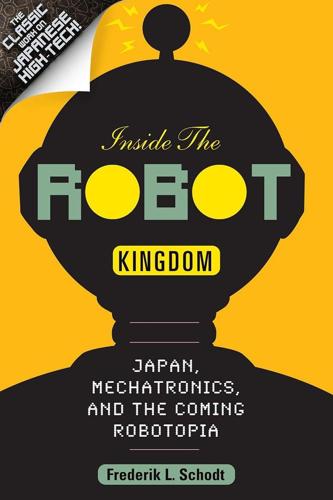
Inside the Robot Kingdom: Japan, Mechatronics and the Coming Robotopia
by
Frederik L. Schodt
Published 31 Mar 1988
Another way to compensate for the limitations of computer technology is to create robots that are not totally independent, but hybrids between man and machine, to create something similar to the low-tech Iron Man No. 28, rather than the free-flying Mighty Atom. Led by Susumu Tachi, chief of robotics at the government's Mechanical Engineering Laboratory (MEL), a sophisticated form of remote control known variously as "teleoperation," "telepresence," and (in Japan) "tele-existence" has become the core technology behind all three of the project robots. Tele-existence involves an autonomous robot operating under its own power, capable of performing specialized tasks (such as simple navigating inside the reactor or tightening bolts), and a decision-making human operator who can intervene for complicated tasks while "driving" and operating the robot with joy sticks from a remote location.
…
See also artificial intelligence Sony, 28 Sorayama, Hajime, 24 static stability, 230 subcontractors, 20,100,123; changes in relationships, 165-66 suicides, 160, 227 Suzumo Machinery Industries, 170-72 Sweden, 16,149,153 synalysis, 204 Tachi, Susumu, 43, 215, 216 Takahashi, Ryosuke, 88 Takara, 98,100-101,103 Takeda, Omi, 59-60, 63 Tamaya, Shobe-e, 62-64 Tanaka, Hisashige: 68-72; inventions of, 69-71; Satow's description of, 68; significance of, 72 Tanku Tankuro, 73, 74 Tatsukawa, Shoji, 60-62, 66, 71 tea-carrying doll: construction of, 60; description of, 55-57; price of, 62, 64; recreation of, 61-62; significance of, 66 technology: effect of media on, 23; effect of World War II on attitudes toward, 76-78; religion and, 202; traditional Japan's fear of, 65; traditional Japan's level of, 57, 66-67 technopolis, 123, 227 "technostress", 163 telechirs, 49 tele-existence, 215 teleoperation, 49, 215 telepresence, 215 Tezuka, Osamu, 75-79; Principles of Robot Law, 77 Thatcher, Margaret, 134,184 Three Laws of Robotics, 76-77, 157. See also Asimov, Isaac time system, early Japanese, 58-59 tin toy robots, 91-95; improvements in quality, 93-95; poor quality of, 92 Tokugawa, 58, 61, 67 Tokyo Electric Power Company, 20, 116, 185 Tokyo Technical Center, 124 Tomino, Yoshiyuki, 43, 86-89 Tomy, 27, 93-94,103-6,108 Toriyama, Akira, 81 Toshiba, 72, 151, 154, 222-23, 226, 228-29 Toyota, 172, 226 toy robots: first generation, 91-95; problems manufacturing, 93, 98-103; second generation, 55-103; third generation, 103-8 trade friction: industrial robot, 14,145; toy robot, 105 transformation, 84-85, 87, 96-98 Transformers, 98,101,108 "Treatise on Pneumatics," 55-56 Tsuda, Tsukezaiemon, 63 Tsukuba, 22, 224, 227 Twenty-first century, 13, 23,174,191, 204 Umetani, Yoji, 219-20, 227 "Uncanny Valley", Masahiro Mori's theory of, 208-9 Unimate, 113, 116-17,128-30,161; description of first model, 34 Unimation Inc., 34,111-13, 126-28, 130 unions, 151-52,155-56,158-60,167; All Japan Federation of Electric Machine Workers Union, 156; All Nissan Motor Workers Union, 155; Federation of Japan Automobile Workers' Unions, 158 United States President's Commission on Industrial Competitiveness, 169 United States Robots, 127 universities, research environment, 218-22 "unmanned factories", 45-46,159,188 Unno, Juza, 75 Urata, Kenji, 164 US. robot manufacturers' dependence on Japan, 127-28,145 VAL, 161 Vaucanson, Jacques de, 56, 65 Versatran, 111-12,114 vision, 36, 47-48, 51,119,129,149,177, 216, 222 Wabot, 203, 206.

Physics of the Future: How Science Will Shape Human Destiny and Our Daily Lives by the Year 2100
by
Michio Kaku
Published 15 Mar 2011
(Some commentators have remarked that the Internet was originally conceived as a “male” device by the Pentagon, that is, it was concerned with dominating an enemy in wartime. But now the Internet is mainly “female,” in that it’s about reaching out and touching someone.) Teleconferencing will be replaced by telepresence—the complete 3‑D images and sounds of a person will appear in your glasses or contact lens. At a meeting, for example, everyone will sit around a table, except some of the participants will appear only in your lens. Without your lens, you would see that some of the chairs around the table are empty.
…
You won’t need teleprompters, cue cards, sheet music, or notes to remind you. You will not need to memorize anything anymore. Other examples include: • If you are a student and missed a lecture, you will be able to download lectures given by virtual professors on any subject and watch them. Via telepresence, an image of a real professor could appear in front of you and answer any questions you may have. You will also be able to see demonstrations of experiments, videos, etc., via your lens. • If you are a soldier in the field, your goggles or headset may give you all the latest information, maps, enemy locations, direction of enemy fire, instructions from superiors, etc.
…
Schwabl, Mike Schwartz, Peter Schwarzenegger, Arnold Second Life (Website) Self-assembly Self-awareness Self-replicating robots, 2.1, 8.1, 8.2 Sen, Ayusman SETI (Search for Extraterrestrial Intelligence) program Severe combined immunodeficiency (SCID) Shakespeare, William Shape-shifting technology Shaw, George Bernard Shen, Weimin Shopping in 2100, 9.1, 9.2 Shostak, Seth Silicon chips, limitations of, 1.1, 1.2, 4.1 Silva, Alcino Simon, Herbert Simon, Julian Simonyi, Charles Sinclair, David, 3.1, 3.2, 3.3 Singapore Singularity Sirtuins SixthSense project 6th Day, The (movie) Sketch for a Historical Picture of the Progress of the Human Mind (Condorcet) Slingatron Smalley, Richard, 4.1, 4.2, 4.3 Smart dust Smith, Adam Smith, Gerald Social robotics Solar power Solar sail propulsion system Sonograms Sonoluminescence Space elevator SpaceShip spacecraft, 6.1, 6.2, 6.3 Space solar power (SSP) Space travel, itr.1, 6.1 asteroid landing big bang research booster-rocket technologies cost of Europa exploration far future (2070) genetic engineering of humans for human-robot merger and life in space, search for, 6.1, 8.1 Mars landing/colonization Martian moon landing midcentury (2030) moon landing/colonization, 6.1, 6.2 nanotechnology and, 6.1, 6.2 near future (present to 2030) planets outside the solar system, search for private initiatives robotics and, 2.1, 6.1, 6.2, 6.3, 6.4 space elevator tourism water in space, search for, 6.1, 6.2 weightlessness problem See also Starships Spinal cord injury treatments Sports and games, 8.1, 9.1 STAIR (Stanford artificial intelligence robot), 2.1, 2.2 Starships antimatter rocket propulsion system nanoships nuclear rocket propulsion system ramjet fusion propulsion system solar sail propulsion system Star Trek series, itr.1, 1.1, 1.2, 1.3, 1.4, 1.5, 2.1, 2.2, 3.1, 4.1, 8.1, 8.2 Star Wars saga, 1.1, 1.2, 1.3, 1.4, 2.1, 8.1 Steam power Steffens, John Stem cell technology Stewart, Potter Stock, Greg, 2.1, 3.1, 3.2 Stormer, Horst Stratton, Mike Sullivan, Mark Superconductors telekinesis and Surgery Surrogates Surrogates (movie), 1.1, 2.1, 2.2 Sussman, Gerald Swarming behavior, 6.1, 6.2 Tachi, Susumu Taleyarkhan, Rusi Taylor, Doris, 3.1, 3.2 Taylor, Theodore Technologies as utilities Technology, four stages of Telekinesis Telepresence Telomeres of a cell Terminator movies, 1.1, 2.1, 2.2, 4.1 Terraforming of Mars Terrestrial Planet Finder Terrorism, 3.1, 8.1 Tesla Roadster Test tube babies Things to Come (movie) 3-D technology Three Mile Island nuclear accident Thurow, Lester, 7.1, 7.2, 7.3, 7.4 Tidman, Derek Time Machine, The (Wells) Tissue engineering, 3.1, 3.2 Toffler, Alvin and Heidi Total Recall (movie) Tour, James Tourism industry Tourism in space Trains, maglev Transformers: Revenge of the Fallen (movie) Transistors, 1.1, 4.1 Tsien, Joseph Tsiolkovsky, Konstantin Tundra, melting of Turing, Alan Twister (movie) 2001 (movie) Type 0-IV civilizations.
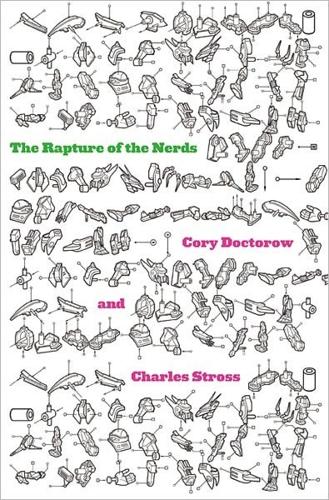
The Rapture of the Nerds
by
Cory Doctorow
and
Charles Stross
Published 3 Sep 2012
At least this tramp floater with its cargo of Christmas trees and chameleon paint is going to give Huw and his fellow passengers a shortcut around the Mediterranean, even if the common room smells of stale marijuana smoke and the other passengers are all dubious cheapskate hitchers and netburn cases who want to ship their meatbodies around instead of doing the decent (and sanitary) thing and using telepresence instead. Huw isn’t dubious; he’s just on jury service, which requires your physical in-the-flesh presence to prevent identity spoofing by imported weakly godlike AIs and suchlike. But judging from the way the other passengers are avoiding him, he looks dubious: it’s probably the biohazard burka and the many layers of anti-nanophage underwear he’s trussed up in inside it.
…
“This meatsuit allows Us to bring the Word to Our scattered temples without having to transport Our physical person through the uncertain world. One day, all of us will be liberated by these meatsuits, free to explore our flesh in many bodies all at once.” “You’re uploaded?” Huw says, taking his hand away quickly and shuffling back on his knees. The Bishop snorts a laugh with its rightmost face. “No, child, no. Merely telepresent. Uploading is the mortification of the flesh—this is its celebration.” “Your Grace,” Bonnie says, peering up at it through her fringe with her eyes seductively wide. “It has been an honor and privilege to serve you in my time here in Glory City. I’ve found my counseling duties to be very rewarding—the gender-reassignees here face unique challenges, and it’s wonderful to be able to help them.”
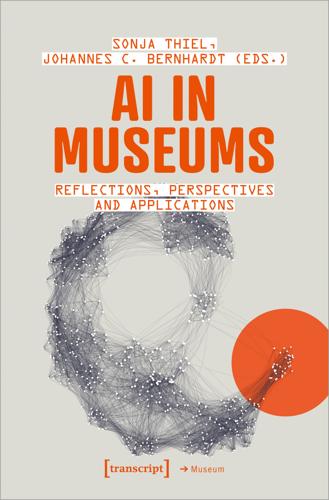
AI in Museums: Reflections, Perspectives and Applications
by
Sonja Thiel
and
Johannes C. Bernhardt
Published 31 Dec 2023
The new Robot Science Museum in Korea, for instance, is to be constructed solely by robots, based on plans by Melike Altınışık Architects from Istanbul. Actually, the use of robotics in museums dates back to the 1990s, among others in the form of Rhino, one of the first robot museum tour guides, at the Deutsches Museum in Bonn, Germany (Königs 2017). Since 2014, Pepper, a so-called telepresence robot developed by the French company Aldebaran (part of the German United Robotics Group since 2022) has made a particularly prominent appearance (Tyagi 2021). Pepper is used in museums worldwide and impresses with its multilingualism, including Swahili. Before the Smithsonian, for example, began using Pepper in 2018 to improve its visitor experience, it had as long ago as 1998 introduced AI-supported robotics in museum operations with the short-term experimental use of a tour robot called Minerva (Thrun/Beetz et al. 2000).
…
In some 26 27 https://arts.unimelb.edu.au/research/digital-studio/projects/deep-mapping. https://www.auckland.ac.nz/en/news/2021/09/20/using-technologies-of-the-future-to-piec e-together-the-past.html. 141 142 Part 2: Perspectives cases, this is accompanied by a game feature in the form of a treasure hunt through the museum, as, for example, in several museums in Milan (Casa Museo Boschi di Stefano, Museo Bagatti Valsecchi, Museo Poldi Pezzoli, and Villa Necchi Campiglio). There is also experimentation with the use of robotics; but apart from the HRI export success Pepper, permanent implementations such as in Japan or Korea are quite rare. One example of long-term use is, however, represented by a standalone version of the telepresence tour robot Virgil at the Castello di Racconigi, Italy (Lupetti/Germak et al. 2015). Furthermore, in Central Europe, the use of AI for collection documentation, research, and conservation as well as general operational structures such as facility management has been part of various experimental short-term applications and projects, including the use of neural networks and machine learning (Operation Night Watch, Rijksmuseum, Amsterdam, Netherlands, 202128 ; Klimt vs.

The Long History of the Future: Why Tomorrow's Technology Still Isn't Here
by
Nicole Kobie
Published 3 Jul 2024
And that meant there was suddenly an oversupply of extremely intelligent people with very specific skill sets and large corporate redundancy payouts. Some of them teamed up to build an industry. They included Jaron Lanier and Tom Zimmerman, who went on to set up VPL Research; Scott Fisher, who went on to NASA’s Ames lab; Brenda Laurel, who co-founded Telepresence Research with Fisher and is considered a trailblazer in game design, and Michael Naimark, who worked on that interactive map of Aspen and later with Google, Apple and LucasFilm on virtual projects. The first-named of those figures, Jaron Lanier, is a key person here, and he often gets the ‘father of virtual reality’ title that the media (again, sorry) loves to bestow, in part because he’s credited with coining the phrase ‘virtual reality’, though he himself disputes this.
…
In 2005, the plan for Songdo was to build the technology infrastructure locally and look to overseas tech companies for support as partners. In 2011, Cisco signed on, beginning with an investment in a new joint venture called Songdo U-Life, including the use of Cisco networking to connect the island’s buildings. The press release promised more than 10,000 Cisco TelePresence units for video conferencing, so residents could access education and concierge services, as well as sensors embedded in buildings to track energy use. This would allow residents to live a ‘technology-enabled lifestyle through digital infrastructure systems designed and built directly into the city’s framework’.

Tomorrow's Lawyers: An Introduction to Your Future
by
Richard Susskind
Published 10 Jan 2013
Crucially, also, the report did establish that a video link between a police station and a court can be used successfully to conduct a first hearing in the majority of criminal cases—and, in the pilot, it reduced the average time from charge to first hearing, it cut down the failure-to-appear rates, and it saved the costs of transporting prisoners from prisons to courts. The growing use across society of video-calling and video-conferencing—from Skype to ‘telepresence’ (which is like Skype on steroids)—suggests there is enormous scope for virtual courts, if not for trials then for earlier hearings, when judges could sit in their chambers and all participants could attend remotely. For tomorrow’s lawyers, appearance in physical courtrooms may become a rarity.

Moon Rush: The New Space Race
by
Leonard David
Published 6 May 2019
These tests represented the first fully interactive, remote operation of a planetary rover by astronauts in space. Low-latency telerobotics will enhance and extend human reach, enabling astronauts to be present on planetary surfaces without enduring the hardships of actually surviving on those planets. The lessons learned from these lunar operations will feed forward to future low-latency telepresence missions on Mars. It’s a logical flow: The road to Mars is paved with local trial-and-error training through cislunar space and on the Moon. * * * THE U.S.-LED GATEWAY is not the only back-to-the-Moon initiative under way today. There has been mounting interest in Europe to prioritize the Moon as humanity’s next deep-space destination.

Your Computer Is on Fire
by
Thomas S. Mullaney
,
Benjamin Peters
,
Mar Hicks
and
Kavita Philip
Published 9 Mar 2021
It has to be over, because to allow it to continue is simply too dangerous. Nothing Is Virtual When we speak of “fire” in this volume, we do so in three interconnected ways. Our first usage is literal. Despite widespread tropes that portray computing and new media as immaterial and disembodied—whether through an emphasis on “virtual” reality, “telepresence,” “the Cloud,” “streaming,” the “postindustrial” economy, or otherwise—computing and new media are nothing if not entirely physical, material, and organic. They are physical machines, propelled by fire both material and metabolic. When they run, they run hot; and when they work hard, they run hotter.
…
See also Accent, bias; Voice technologies Stalin, Joseph, 78 Standard Oil, 31 Stanford University, 200, 209, 257 Star Wars: The Old Republic, 243–244 STEM (science, technology, engineering, and math), 4, 7–8, 257 Stephenson, Neal, 102–104, 106–107, 110 Stevens, Ted, 97–98, 101 Stop Enabling Sex Traffickers Act, 118 Streaming, 5, 118 Strife, 237 Subaltern, 304, 306 Surveillance, 74–75 carceral state, 208 corporate, 4, 19 data, 206 global, 86–87, 119 mass network, 85 network, 72, 85 National Security Agency, 99, 103 state, 78, 86–88, 86t, 130 technology, 126–127, 129, 308 Swift, 275 Switchboard, 191 Syria, 216, 219 Tajikistan, 227 Tanzania, 188, 189t, 330 Tata, 103 TCP/IP (Transmission control protocol/internet protocol), 317, 323 IP (internet protocol) blocking, 57 Technocrat, 21, 79, 142, 151 Technologists, 4, 85, 345, 365, 368, 373 diverse users, 154 history, 369, 371 and language, 338–339 women, 144 Technology bias, 214, 218, 232 Cold War, 17–18, 94, 137 Digital, 40, 64, 123–124, 200, 382 and dying well, 378 emergent, 199 and empire, 19, 187 environment and, 44–46, 76, 321, 339 Euro-American, 100, 221 fire and, 13, 111, 313 gender inequality in design, 370 inequality and, 152–154, 227, 309 information, 15, 30, 32, 40, 110, 291, 298, 308 large technical systems, 316–317 and modernity, 98 and oppression, 179, 200, 202, 204, 372–373 progress, 19–20, 65, 98 and racism (see Racism) small, 219–220 speech (see Voice technologies) surveillance, 126–127, 129, 308 technocolonialism, 103–104 technocrats, 21, 79, 142, 151 technologists (see Technologists) technoneutrality, 4 technophobia, 3, 363, 365 techno-utopia, 4, 365 training, 253–254, 265 Technoneutrality, 4 Technophobia, 3, 363, 365 Techno-utopia, 4, 365 Telecommunication companies, 13, 35, 87, 93, 155 cable-laying, 101, 103–104 India, 330 network, 315, 325 Telecom Regulatory Authority, 330–331 Telepresence, 5 Terms of usage, 4 Tesla, 45 Tetris, 234–236 Thailand (Thai), 102, 342, 354 Thompson, Ken, 273–275, 277, 286–289, 291–292 “Reflections on Trusting Trust,” 273–274, 278 Thompson hack bootstrapping, 281–284 in real life, 289–291 replication, 278–281 Trojan horse, 284–286 Tiltfactor Lab, 235 T9, 7 Toyota, 175 Train, 234 Transgender people, 136, 141 Transportation, 30–31, 37, 319 Travel narratives, 101 Treadmill of reforms, 78 Triangle Shirtwaist Factory, 22 Trinidad, 184–185, 193, 367 Trojan Horse, 273, 284–292 Trucking, 30, 46, 313 Trump, Donald J., 20, 23, 54, 207 Trust, problem of, 36, 38 Tumblr, 224 Turing, Alan, 18 Turing Award, 273 Turkopticon, 370 Turkey, 62–63, 214, 216, 218–219 Twitter, 12, 17, 54, 322, 379 and diversity, 254, 260–261 and Donald Trump, 20, 54 and language, 214, 227 as news media, 23 and policing, 120 2K Games, 237 Typeface, 216–218, 225 Typewriter (typing), 41, 337 Arabic, 213–221 Arabic language and software, 221, 223, 227–228 Chinese, 346, 350 electric, 220–221 mechanical typesetting, 339–340, 357 Mingkwai, 346–349, 347f, 353 orthographies, 341–344, 346, 350, 353–354, 356 QWERTY, 342–343, 349–350, 354 Siamese, 343 typing as obstacle, 356 typographic imperialism, 226 Underwood Typewriter Company, 218 Uber, 23–24, 31, 35, 254, 261, 267 and systems, 313, 319, 332 Uber Eats, 210 UGC (user-generated content), 54–56, 61–62, 66 Uighur, 227 Underrepresented, 253–255, 258–260, 264–267 UNESCO (United Nations Educational, Scientific, and Cultural Organization), 304, 309 Unions, 23–24, 159–160, 368, 373 IBM in Germany, 170–172 IBM in the United States, 161, 166–167, 173–175 India, 301, 308 United Arab Emirates, 226 United Kingdom, 83 accent bias, 180–183, 182t, 185–186, 188, 190t Anglocentrism, 344 civil service, 138–139, 141, 144, 150 classism, 138–139 early computing leader, 138 empire, 381 industrial technology, 221, 327 Ministry of Technology, 150 NGO (nongovernmental organization) networks, 324 Shirley, Stephanie “Steve,” 143–147, 146f Submarine cable networks, 93 United Kingdom (cont.)

The Retreat of Western Liberalism
by
Edward Luce
Published 20 Apr 2017
Its next generation of offshore jobs will be devoted to far more complex tasks, such as providing medical diagnoses, writing legal briefs, remotely supervising factories and plants, and doing consumer data analysis. In fact, it is already happening. The speed with which virtual presence and holographic telepresence are improving is opening up whole areas. So too are rapid leaps in language-translation software (India should beware: China’s relative lack of English will no longer be such a disadvantage). In the West we spend half our time fretting about low-skilled immigrants. We should be worrying at least as much about high-skilled offshoring.
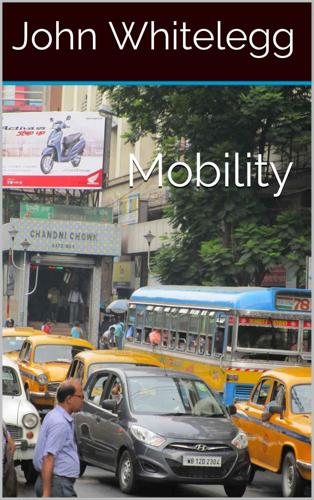
Mobility: A New Urban Design and Transport Planning Philosophy for a Sustainable Future
by
John Whitelegg
Published 1 Sep 2015
Improvements in other transport modes will see people substituting air with rail travel, for example, when travelling from the UK to continental Europe. Businesses will replace physical travel with virtual meetings due to improved telecommunication. High speed internet will see video-conferencing and tele-presence systems commonplace in offices. The MI foresees a cultural-change in organisations towards travel through de-incentivising foreign travel and a stronger sense of corporate social responsibility. Constraining capacity: The BAU Scenario was based on DfT forecasts that included additional capacity at Stansted Airport and a third runway at Heathrow Airport.

Idoru
by
William Gibson
Published 2 Jan 1996
9 2.Lo Rez Skyline They met in a jungle clearing. Kelsey had done the vegetation: big bright Rousseau leaves, car-won orchids flecked with her idea of tropical colors (which reminded Chia of that mall chain that sold "organic" cosmetic products in shades utterly unknown to nature). Zona, the only one telepresent who'd ever seen anything like a real jungle, had done the audio, providing birdcalis, invisible but realistically dopplering bugs, and the odd vegetational rustle artfully suggesting not snakes but some shy furry thing, soft-pawed and curious. The light, such as there was, filtered down through high, green canopies, entirely too Disneyesque for Chia-though there was no real need for "light" in a place that consisted of nothing else.

12 Bytes: How We Got Here. Where We Might Go Next
by
Jeanette Winterson
Published 15 Mar 2021
In April 2021, Facebook rolled out updated avatars for their Oculus VR system that allow for a quintillion combinations, so you can represent yourself in VR the way you want to. 5G broadband and 4-8K video will allow for speed and visual complexity. International travel is expensive for companies, and bad for the planet – a real sense of being in another place could change how we do business. Telepresence robots allow you to beam your face into their screen, chat with others at the location, and physically move around an office complex or factory – if you need to inspect some merchandise, for instance. The bot moves autonomously. Ava Robotics have seen a surge in sales from high-end reale-state agents since Covid, as the bot can ‘walk’ through a large property or estate, with the potential buyer ‘inside’ the bot, in real time, taking a proper look at what is on offer

Uncanny Valley: A Memoir
by
Anna Wiener
Published 14 Jan 2020
Meetings were held over videoconferencing software, and people dialed in from wherever they happened to be: public transportation, pool loungers, unmade beds, living rooms with partners napping in the background. An engineer attended his daily stand-up meeting from an indoor climbing wall, gripping a plastic rock and wearing a harness. A telepresence robot rolled around the first-floor event space, lanky and conspicuous, a bridge between worlds. People came and went, operating on individualized schedules. I never knew whom I would run into at HQ, or whether I would be working alone. On every floor were mounted television screens displaying heat maps, and lists of employee avatars indicating who was in the building and where.

All Tomorrow's Parties
by
William Gibson
Published 2 Jan 1999
I am seeking an outcome in which I will retain viability. I am seeking an outcome in which Harwood Levine will not have become four meaningless syllables. If the world is to be reborn, I wish to be reborn in it, as something akin to what I am today." Thinking of the possible number and variety of crosshairs that must be trained on him now, hidden telepresent weapons platforms. He is fairly certain, nonetheless, that he could kill Harwood, if the moment required, though he also knows that he would almost certainly predecease him, if only by some fraction of a second. "I think you have become more complicated, since we last met." "Complex," Harwood says, and smiles. 175 I 176 42.RED GHOSTS OF EUROPEAN TIME FONTAINE makes himself a cup of instant miso on the hotplate.

Social Life of Information
by
John Seely Brown
and
Paul Duguid
Published 2 Feb 2000
There it undoubtedly scores lots of worthwhile hits. But such successes can make designers blind to the difficulty of more serious challengesprimarily, to the resourcefulness that helps embed certain ways of doing things deep in our lives. Generations of confident videophones, conferencing tools, and technologies for tele-presence are still far from capturing the essence of a firm handshake or a straight look in the eye. To say this is not to plead for a return to the buggy cart, the steam engine, or the vinyl record. It is to plead for attentionattention to stubbornness, to what will not budge, to the things that people fight for.

Live Work Work Work Die: A Journey Into the Savage Heart of Silicon Valley
by
Corey Pein
Published 23 Apr 2018
But SU also staged two-day traveling seminars called Singularity Summits. The next summit was to be held in Amsterdam. The promotional materials promised fantastical revelations to all who attended. Sessions on the “revolution in robotics and artificial intelligence” would cover the latest in drones, “telepresence,” and something called “deep learning.” Other speakers would explore the possibilities of bodily implants, exoskeletons, 3-D-printed organs, and nanomedicine. There would be sessions on “organizing society for accelerating change,” which was to tack government and the relationship of technology to “unemployment and inequality.”
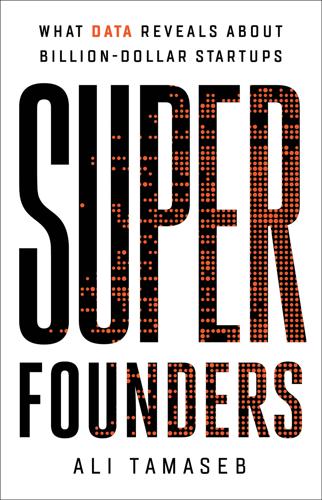
Super Founders: What Data Reveals About Billion-Dollar Startups
by
Ali Tamaseb
Published 14 Sep 2021
The coronavirus-related pandemic of 2020, which led to many companies and schools adopting work- and teach-from-home policies, significantly boosted Zoom’s business, doubling its revenues in one quarter and quadrupling its valuation in the public markets. In 2011, Cisco and Polycom owned the majority of the enterprise videoconferencing market. In 2018, Zoom became the market leader. Sources: Sean Buckley, “Enterprise Videoconferencing and Telepresence Market Share Leaders” (chart), Fierce Telecom, March 9, 2012, www.fiercetelecom.com/telecom/week-research-enterprises-catch-videoconferencing-bug-adc-revenue-surges-to-1-4b; “Web Conferencing Market Share Report: Competitor Analysis: Zoom, GoToWebinar, Cisco Webex,” Datanyze, www.datanyze.com/market-share/web-conferencing--52?

Diaspora
by
Greg Egan
Published 1 Jan 1997
Moving about in public 5-scapes still made Orlando intensely self-conscious, less out of any fear of falling flat on his face than from a strong sense that he could take no credit for the fact that he didn't. His 5-body came equipped with numerous invaluable reflexes, as any real macrospherean body almost certainly would, but relying on these alien instincts made him feel like he was operating a telepresence robot programmed with so many autonomous responses that any instructions he gave it would be superfluous. He glanced down at the bottom of the window. The most trivial details in a 5-scape could still be hypnotic; the tesseract of the window met the tesseract of the floor along, not a line, but a roughly cubical volume.

The Fourth Age: Smart Robots, Conscious Computers, and the Future of Humanity
by
Byron Reese
Published 23 Apr 2018
Artificial limbs have been developed that are controlled by the brain. We will soon 3-D print new veins and arteries, and within a decade, replacement organs, such as the liver. Rehab robotic limbs allow someone to gradually regain the use of her or her arms and legs by gradually dialing down how much assistance they provide. Telepresence robots that allow doctors to virtually diagnose someone anywhere in the world are already a thing. Computer-controlled lasers are doing surgeries no human hand could perform. A company in the Netherlands has developed a pill that can travel to a certain part of the body to deliver its medicinal payload.
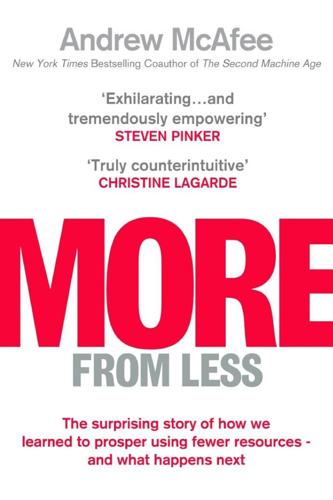
More From Less: The Surprising Story of How We Learned to Prosper Using Fewer Resources – and What Happens Next
by
Andrew McAfee
Published 30 Sep 2019
“Service industry” is a category so broad as to be almost meaningless: it includes everything from investment banking to software programming to dry cleaning to dog walking. Most service industries do have two important things in common: many of their jobs have been harder to automate (no dog-walking robot is commercially available yet, as far as I know), and they rely heavily on in-person interactions. You can’t get your dry cleaning done via telepresence, and investment bankers like being around other investment bankers. The in-person nature of service jobs matters for concentration. Because cities are where the people are, they’re also where the service jobs are. Because people are aware of where the jobs are, they move to cities. Responsive governments contribute to urbanization by building public transportation and other infrastructure, helping to clear a path for dense housing, and fighting crime and promoting public safety.

Life After Google: The Fall of Big Data and the Rise of the Blockchain Economy
by
George Gilder
Published 16 Jul 2018
You would click on an icon and be passed to a human operator, or in a world of Google “Home,” an automaton. The “operator” assigns you to a conversation in HD voice. At seven kilohertz (in contrast to the usual three kilohertz) and a doubled sample rate, the acoustics are uncannily clear and resonant. Unneeded are telephone numbers or traditional searches. You can speak or not as you wish. Clear as telepresence. Hello Digital is the name of the company with this idea. Berninger admits it might not be a good idea—“knowledge is about the past; entrepreneurship is about the future”—but surely it is not the role of the government to block it. Berninger arrives for dinner at the swank University Club in DC wearing Silicon Valley jeans and no jacket.
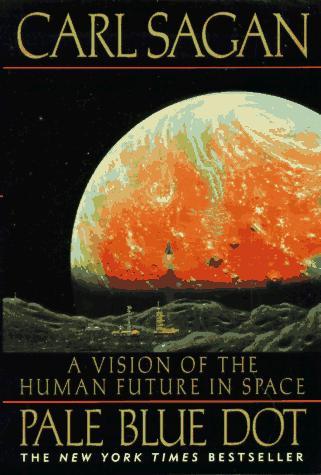
Pale Blue Dot: A Vision of the Human Future in Space
by
Carl Sagan
Published 8 Sep 1997
If every crew member has one essential specialty, what happens if one of them falls ill? The larger the crew, the more reliable the backups. You would almost certainly not send a full-time oral surgeon, but what happens if you need root canal work and you're a hundred million miles from the nearest dentist? Or could it be done by an endodontist on Earth, using telepresence? Wernher von Braun was the Nazi-American engineer who, more than anyone else, actually took us into space. His 1952 book Das Marsprojekt envisioned a first mission with 10 interplanetary spacecraft, 70 crew members, and 3 "landing boats." Redundancy was uppermost in his mind. The logistical requirements, he wrote, "are no greater than those for a minor military operation extending over a limited theater of war."

Future Files: A Brief History of the Next 50 Years
by
Richard Watson
Published 1 Jan 2008
Just hop online any time you like and shop until you find true happiness. Search for what you want from around the world in seconds; try on anything you want (even things you can’t afford) in any one of an infinite number of virtual 3-D changing rooms. Ask how things are made, where they are from, and even take a telepresence tour of the factory if you want. You can smell and touch things using scent downloads and haptic gloves, and payment is instantaneous. Fantastic. Of course, none of this works. The web was browned out again this morning, so logging on took over an hour. The changing rooms were all full (I have no idea how this can be possible), and my Smell-A-Rama™ pod kept pumping out milk chocolate when I was trying to get a whiff of a navy cashmere jumper (size: extra medium).

Scratch Monkey
by
Stross, Charles
Published 1 Jan 2011
But we're eight light-seconds from Pascal. And how long will it take us to figure out an interface protocol? There's no rule to say that the control space or architecture of an Ultrabright expansion processor will resemble anything we know about. I hop channels, looking for more trouble. I can't feel my body; I'm a ghost in the telepresence wires, unable to localise myself. After a few false tries I find something interesting: Mik. Mikhail scans a full circle around his sensor turret. Ahead of him the passage he's in diverges into three prongs, two of them descending towards the core of the alien ship. Veins and ropes of blue light flutter just under the skin, which pulses gently in time with it.

Bold: How to Go Big, Create Wealth and Impact the World
by
Peter H. Diamandis
and
Steven Kotler
Published 3 Feb 2015
In the aftermath of these reports, Foxconn’s president, Terry Gou, said he intended to replace one million workers with robots over the next three years.54 Besides replacing our blue-collar workforce, over the next three to five years, robots will invade a much wider assortment of fields. “Already,” says Dan Barry, “we’re seeing telepresence robots transport our eyes, ears, arms, and legs to conferences and meetings. Autonomous cars, which are, after all, just robots, will [start to] chauffeur people around and deliver goods and services. Over the next decade, robots will also move into health care, replacing doctors for routine surgeries and supplementing nurses for eldercare.

Radical Markets: Uprooting Capitalism and Democracy for a Just Society
by
Eric Posner
and
E. Weyl
Published 14 May 2018
So Tuyên began to travel around the country and world looking for pockets of fellow travelers unwilling to sell their soul to the demons of data and commonly owned capital. She found her compatriots online and rallied a hundred local victories from Winnipeg to Tashkent. Her “Defend our World” (DoW) movement became a paradox: fiercely localist, tied to the soil and traditions, almost every meeting relied on automated translation and virtual reality telepresence. Too few citizens were willing to join to create a critical mass of solidarity beyond a few pockets. Yes, they won a local council seat in many small towns, and when by luck enough of their members were in or had ties to Novosibirsk they even won a mayoralty. But as they started to build outward, in each case, the liberals (rich and poor) always got wind of it and flocked in to buy up more votes than DoW could ever muster.

Being You: A New Science of Consciousness
by
Anil Seth
Published 29 Aug 2021
Each Geminoid is constructed from detailed 3D body scans and has pneumatic actuators able to generate a wide range of facial expressions and gestures. There is precious little AI as such in these devices – they are all about human mimicry, with possible applications in, among other things, remote presence or ‘telepresence’. Ishiguro once used his Geminoid to deliver a forty-five-minute remote lecture to 150 undergraduate students. Geminoids are undeniably creepy. They are realistic, but not quite realistic enough. Think of meeting a Geminoid as the opposite of meeting a cat. With a cat – or an octopus, for that matter – there is an immediate sense of the presence of another conscious entity, even though visual appearances are so different.

Is the Internet Changing the Way You Think?: The Net's Impact on Our Minds and Future
by
John Brockman
Published 18 Jan 2011
Sidelining Epidemics One of the more dire prospects for collapse is an infectious disease epidemic. Bacterial or viral epidemics precipitated the fall of the golden age of Athens, the Roman Empire, and most empires of the Native Americans. The Internet can be our key to survival, because the ability to work telepresently can inhibit microbial transmission by reducing human-to-human contact. In the face of an otherwise devastating epidemic, businesses can keep supply chains running with the maximum number of employees working from home. This won’t keep everyone off the streets, but it can reduce host density below the tipping point.
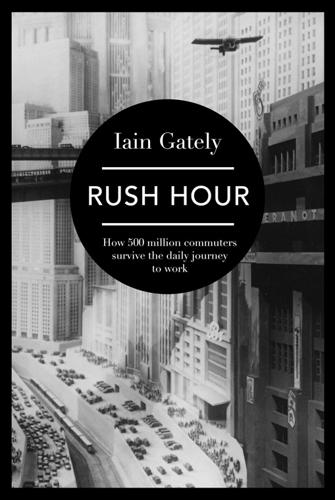
Rush Hour: How 500 Million Commuters Survive the Daily Journey to Work
by
Iain Gately
Published 6 Nov 2014
*2 The march of sans-serif fonts continues: they’re reckoned to be easier to read on computer screens and therefore dominate digital publishing. *3 The first totally driverless system in London. CHAPTER XIII Virtual Journeys We are entering an era of electronically extended bodies living at the intersection points of the physical and virtual worlds, of occupation and interaction through telepresence as well as through physical presence. William Mitchell, City of Bits: Space, Place and the Infobahn, 1994 If it is possible to take drivers out of commuter trains, might it be feasible to take commuters off them too? Instead of people travelling to work, their work would come to them: leave its place of origin for the homes of workers every morning, and return at the end of each day to be integrated into whatever grand scheme it belonged.

The Measure of Progress: Counting What Really Matters
by
Diane Coyle
Published 15 Apr 2025
The second unbundling took place in the 1990s thanks to ICTs and led to the first wave of offshoring, and the start of today’s production networks. Trade consists not only of finished items but also of components used in production. The natural lens to analyse the networks is an input-output framework. The third unbundling is yet to come, reflecting much cheaper and better telepresence enabling growing trade in s ervices (Baldwin 2019)—discussed later in this chapter. Making a physical product involves three main stages, as Teresa Fort (2023) has summarised: research/design, physical processing of materials, and marketing/distribution/sales. Only the second is classed as manufacturing in official statistics.
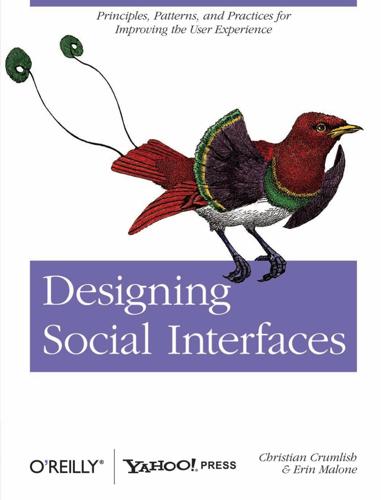
Designing Social Interfaces
by
Christian Crumlish
and
Erin Malone
Published 30 Sep 2009
Facebook sustains social knowledge and networks that begin in conferences and then fade almost immediately until a couple of months later we have a hard time attaching a face to that business card still banging around in our briefcase. A “newsflash” about my cat helps keep the network node called Grant McCracken from blinking out. So, while we may not be able to be fully present across all sensory channels when we’re physically remote (hence the concept of “telepresence” or “online presence”), we do have a growing set of tools and traditions for simulating or modeling presence in the online world (Figure 5-1). For many of us, the first encounter with these sorts of presence indicators occurs in instant message or other real-time communication applications. Figure 5-1.
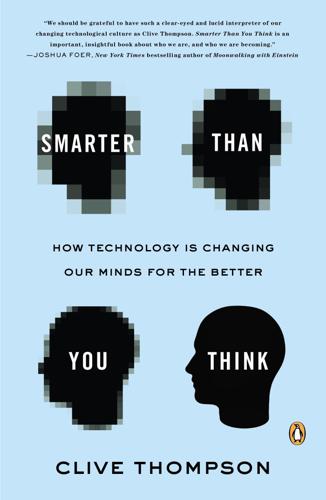
Smarter Than You Think: How Technology Is Changing Our Minds for the Better
by
Clive Thompson
Published 11 Sep 2013
At MIT’s Media Lab, the students are required to show off their new projects on Demo Day, with an audience of interested spectators and corporate sponsors. For years the unofficial credo was “demo or die”: if your project didn’t work as intended, you died (much as stand-up comedians “die” on stage when their act bombs). I’ve attended a few of these events and watched as some poor student’s telepresence robot freezes up and crashes . . . and the student’s desperate, white-faced hand waving begins. When you walk around meditating on an idea quietly to yourself, you do a lot of hand waving. It’s easy to win an argument inside your head. But when you face a real audience, as Weinberg points out, the hand waving has to end.

New Laws of Robotics: Defending Human Expertise in the Age of AI
by
Frank Pasquale
Published 14 May 2020
The younger students were more likely to engage, to enjoy the class, and to report increased motivation to learn about science.26 The older students, however, were more reserved. The relative caution of the older students suggests at least two interpretations. Perhaps they perceived the instructor behind the Saya as merely phoning it in, using telepresence to avoid the burden of actually being present in the classroom. After more than a decade of interaction with human instructors, the crude expressions and vocalization of the Saya may have seemed too tinny or inauthentic. Saya’s face also seemed to fall into that uncanny valley. The robotic appears as one category; the human, another.
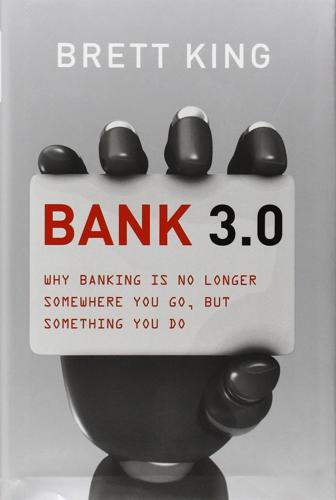
Bank 3.0: Why Banking Is No Longer Somewhere You Go but Something You Do
by
Brett King
Published 26 Dec 2012
What will it mean when the device we carry around in our pocket is more powerful than the most advanced supercomputer available today? How will such technologies impact our life? Self-driving cars, computer-based personal assistants that can predict and anticipate our needs or manage our calendar without needing to ask us any questions; holographic telepresence when we’re away from our loved ones; computers built into everything, from the paint we put on our walls, the clothes to jewellery we wear, to sensors in our bathrooms that can monitor our health based on our morning’s ablutions . . . However, one of the most significant developments Kurzweil predicts centres around the development of 3D printing and replication technologies.
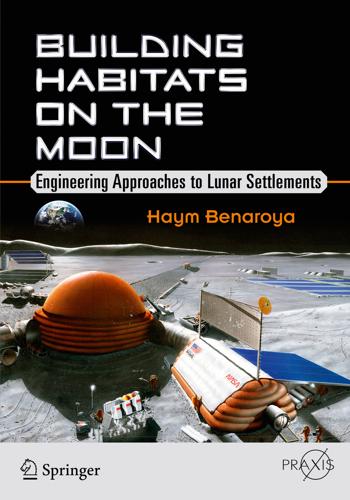
Building Habitats on the Moon: Engineering Approaches to Lunar Settlements
by
Haym Benaroya
Published 12 Jan 2018
This additional source of funds may need to be supplemented in some way.Table 2.1Partial list of dual-use technologies: Communications and Information Systems; In-Situ Resources Utilization; Surface Mobility – Suits Dual-Use Technologies: Communications/Information Systems Terrestrial Applications Technology Space/lunar/Mars applications Communications High-definition TV broadcast Business video conferencing Ka band or higher Telepresence: vision and video data Interferometers: raw data transmission Entertainment industry Commercial aviation Powerplant operations Manufacturing operations Machine-human interface Control stations System management Communications Archiving Computer operating systems Data-compression information processing Large-scale data management systems Interferometers: raw data transmission information processing System management expert data Archiving/neural nets Dual-Use Technologies: In-Situ Resource Utilization Terrestrial Applications Technology Space/lunar/Mars applications Mineral analysis, yield estimation – deep mine vein location and tracking Wall and cell integrity Advanced sensors Mineral analysis, yield estimation of surface mineral analysis and resource location Deep mine robotic operations for – mining – beneficiating – removal Advanced robot mining Surface mine robotic operations for – mining – beneficiating – removal Improved automated processing: increased efficiency Automated processing technology Remote, low-maintenance processing Reliable, low-pollution personal transmission Regenerable energy economies Small, decentralized power systems for remote third world applications Alternative, regenerable energy economies – methane/O2, H2/O2 ISRU-based engines Regenerable energies High-density energy storage Environmentally safe energy production Space-based energy generation and transmission Surface power generation and beaming Dual-Use Technologies: Surface Mobility – Suits Terrestrial Applications Technology Space/lunar/Mars applications Hazardous materials cleanup Fire fighting protection Underwater equipment Homes Aircraft Lightweight superinsulated materials Surface suits: thermal protection Surface facilities: thermal protection Robotic assisted systems Orthopedic devices for mobility of impaired persons Human power enhancement Robotics Mobility enhancement devices and manipulators Robotic assisted suit systems Human power enhancement Hazardous materials cleanup Fire fighting protection Underwater equipment Dust protection, seals, abrasive resistant materials Surface suits: outer garment Hazardous materials cleanup Underwater breathing gear Lightweight hi-reliability life support Portable life support for surface suits Backup life support systems Remote health monitoring Portable biomedical sensors and health evaluation systems Surface EVA crew member health monitoring Hypo-hyper thermal treatments Fire fighting protection and underwater equipment Arctic/Antarctic undergarments Small, efficient, portable cooling and heating systems Surface suits: thermal control systems Rovers : thermal control systems Table 2.2Partial list of dual-use technologies: Surface Mobility – Vehicles, Human Support, and Power.
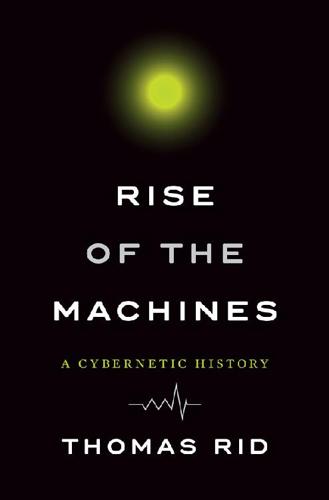
Rise of the Machines: A Cybernetic History
by
Thomas Rid
Published 27 Jun 2016
Makinson, Final Report on Hardiman I Prototype for Machine Augmentation of Human Strength and Endurance, ONR contract no. N00014-66-C0051 (Philadelphia: General Electric, 1971). 60.Berry, “I Was an 18-Foot Robot,” 66. 61.Freitas, “Birth of the Cyborg,” 159. 62.Walter Troy Spencer, “Not Robots, They’re Cyborgs,” New York Times, December 14, 1969. 63.Halacy, Cyborg, 144. 64.Marvin Minsky, “Telepresence,” Omni 2, no. 9 (June 1980): 50. 65.Charles P. Comeau and James S. Bryan, “Headsight Television System Provides Remote Surveillance,” Electronics 34, no. 45 (November 10, 1961): 89. 66.Halacy, Cyborg, 11. 67.Ibid., 19. 68.David M. Rorvik, As Man Becomes Machine: The Evolution of the Cyborg (New York: Doubleday, 1970), 16. 69.Ibid., 13. 70.Gray, Cyborg Handbook, 36. 71.Ibid., 37. 72.William Aspray and Arthur Norberg, An Interview with J.

City: A Guidebook for the Urban Age
by
P. D. Smith
Published 19 Jun 2012
The city will ‘run on information’.10 A pervasive network of sensors and smart chips, spread throughout the city, will transform what is usually a collection of separate machines, buildings and networks into a single urban organism, a sentient city. Just as the parts of the city will talk to each other electronically so, too, will the inhabitants. Every home will be equipped with TelePresence screens, which will be the citizen’s interface with the urban operating system and a communications system for everything from booking a restaurant table to talking to your doctor. The city’s data and services will be instantly available without the need to step outside your apartment. New Songdo City is due for completion in 2015.
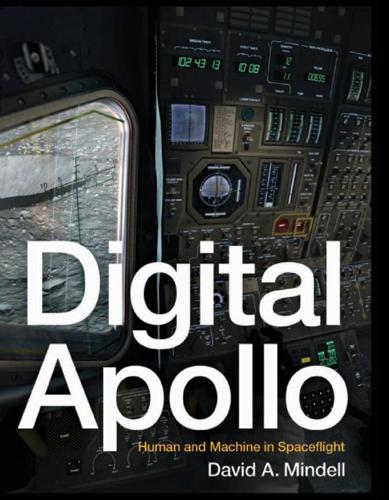
Digital Apollo: Human and Machine in Spaceflight
by
David A. Mindell
Published 3 Apr 2008
Yet 268 Chapter 11 the new control systems also offer safe access to new realms for amateur pilots. Human lives depend on striking the right balance. Aviation is not alone; professional identities in a broad range of fields face similar challenges from automation, simulation, remote operation, and telepresence. Architects now build prototype buildings entirely inside computers, leading some to question whether they are becoming mere computer operators and losing touch with the ‘‘reality’’ of their craft. Scientists conduct experiments entirely in simulated environments, leading some to question whether they lose the ‘‘feel’’ of the physical world.

Jennifer Morgue
by
Stross, Charles
Published 12 Jan 2006
He gestures at a console across the room, where an old bakelite handset squats atop an old graypainted circuit box that I recognize as an enclosure for Billington's Gravedust communicator. "It's so much easier to just dial 'D' for Dagon, so to speak, than to bother with the eerie voices and walls softening under your fingertips. And these days we've sorted out a telepresence solution: he's taken up residence in a host body so he can keep an eye on things in person, while we restore his primary core to full functionality. Of course it's energetically expensive for him to occupy another body, so we have to keep the sacrifice schedule in mind as a critical path element in the restoration project, but there's no shortage of centh-decile underperformers on the sales force ... ah, yes."
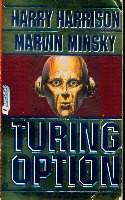
The Turing Option
by
Harry Harrison
and
Marvin Minsky
Published 2 Jan 1992
All of the large cities have cellphone networks and they are expanding." He tapped the telephone on his belt. "I have my own number for this. About most of the time it rings wherever I am in the continental United States." "Is it a satellite link?" "No, satellite connections are too slow for most uses— particularly telepresence. Everything is fiber optics now— even the undersea cables. Cheap and fast. With plenty of room for communication with eight thousand megahertz band-width capacity available everywhere—and all of it two-way." Brian nodded. "I get your drift, Ben. What you're saying is that there is very little chance that I had a local mechanical backup.
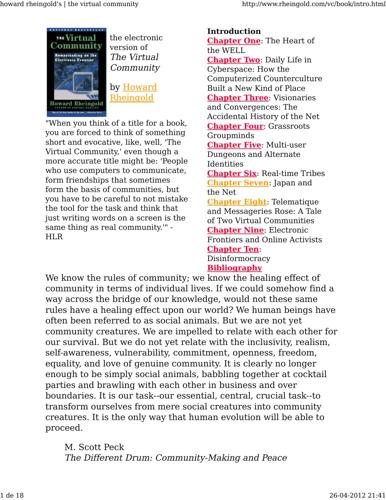
Howard Rheingold
by
The Virtual Community Homesteading on the Electronic Frontier-Perseus Books (1993)
Published 26 Apr 2012
Human Relations 47, no. 1 (1994): 45-62. Mantovani, G. "Social Context in HCl: A New Framework for Mental Models, Cooperation, and Communication." Cognitive Science 20, no. 2 (1996): 237-269. Mantovani, G., and G. Riva. "Real Presence: How Different Ontologies Generate Different Criteria for Presence, Telepresence, and Virtual Presence." Presence-Teleoperators and Virtual Environments 8, no. 5 (1999): 540-550. Matheson, Kimberly. "Social Cues in Computer-Mediated Communication: Gender Makes a Difference." Computers in Human Behavior 7 (1991): 137-145. McChesney, R.W. "The Internet and U.S. Communication Policy-making in Historical and Critical Perspective."
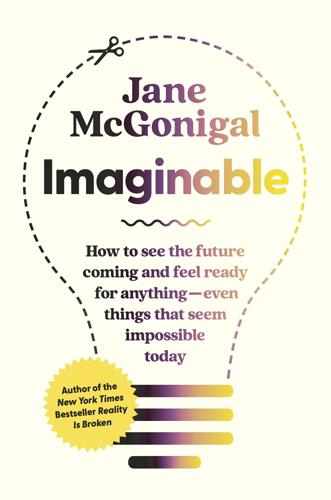
Imaginable: How to See the Future Coming and Feel Ready for Anything―Even Things That Seem Impossible Today
by
Jane McGonigal
Published 22 Mar 2022
But when my colleague Dylan Hendricks took over the role of planning the annual event, he had a suggestion: we should invite teenagers to attend. Ten years from now, today’s teenagers will be helping to shape society. Why not give them a seat at the table now? In 2016, twenty teenagers were invited to attend the Ten-Year Forecast conference, in person or by remote-controlled Beam telepresence robots. We let them tell all of us what they were excited about, and what they were worried about, for the future. Twenty out of 1.2 billion young people is a very small start. But that’s the best way to start—small, so that nothing will stop you, so that you actually do something and not only imagine it.

Surveillance Valley: The Rise of the Military-Digital Complex
by
Yasha Levine
Published 6 Feb 2018
He was simply reaffirming what he had told journalists back in 2013: “Let us speak no more of faith in man, but bind him down from mischief by chains of cryptography.”65 Snowden’s call to arms was taken up by people all over the world: Silicon Valley companies, privacy groups, corporate think tanks and lobbyists, political activists, and thousands of eager techies around the globe. Even Google’s Sergey Brin posed for a selfie with the infamous leaker—or the video-equipped “telepresence” robot that Snowden used to speak at conferences for him.66 Thanks to Snowden, the privacy movement was going mainstream, and the Tor Project was at the center of it all. No matter where you turned in the privacy world, people were united in their admiration for Tor as a solution to surveillance on the Internet.

The Last Astronaut
by
David Wellington
Published 22 Jul 2019
She turned and kicked her way out of the dormitory at once—it sounded as if Rao were being tortured out there. Ripped apart. In the wardroom Rao floated in air, her hands waving back and forth in front of her as if she were warding off a monster. One look around told Jansen what was actually going on. Rao was deep in a VR trance, presumably connecting via telepresence to the GRAM robot over on Wanderer. Jansen flew over to the nearest touchscreen and called up a video of what Rao was seeing. The video started in the middle of a horror show. GRAM’s scalpel arm flashed across the screen, again and again. Cutting into tendrils that stretched and spread across Stevens’s body.

The Age of Spiritual Machines: When Computers Exceed Human Intelligence
by
Ray Kurzweil
Published 31 Dec 1998
In the early 1960s, Papert came to MIT where, with Marvin Minsky, he founded the Artificial Intelligence Laboratory and coauthored their seminal work Perceptrons.” From the web page entitled “Seymour Papert” at <http://papert.www.media.mit.edu/people/papert/>. 4 “[Marvin] Minsky was ... one of the pioneers of intelligence-based mechanical robotics and telepresence.... In 1951 he built the first randomly wired neural network learning machine (called SNARC, for Stochastic Neural-Analog Reinforcement Computer), based on the reinforcement of simulated synaptic transmission coefficients.... Since the early 1950s, Marvin Minsky has worked on using computational ideas to characterize human psychological processes, as well as working to endow machines with intelligence.”
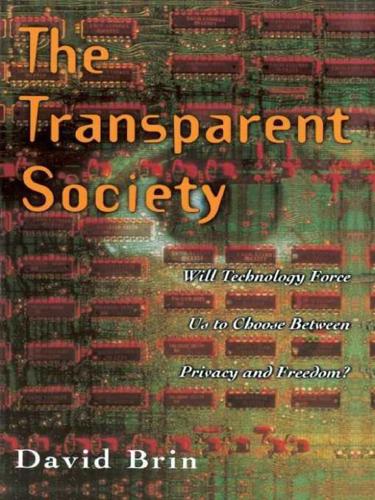
The Transparent Society: Will Technology Force Us to Choose Between Privacy and Freedom?
by
David Brin
Published 1 Jan 1998
In his 1993 book Virtual Reality, Howard Rheingold called for redefining the word community, since in the near future each sovereign individual may be able to sift among six or more billion souls, sorting by talent or avocation to find those compatible for consorting with at long range, via multimedia telepresence, in voluntary associations of shared interest. No longer will geography or birth-happenstance determine your friendships, but rather a natural affinity of passions and pastimes. Some pundits emphasize transnational features of an electronic world, predicting the end of the nation state. (See “A Withering Away?”

Accelerando
by
Stross, Charles
Published 22 Jan 2005
An inquisitive head pops in. "Please to come with us?" It's the female cop with the bad translationware. She takes in Amber's sobbing and tuts under her breath, but as Amber stands up and shambles toward her, she pulls back. At the front desk of a cubicle farm full of police bureaucrats in various states of telepresence, the detective is waiting with a damp cardboard box wrapped in twine. "Please identify," he asks, snipping the string. Amber shakes her head, dizzy with the flow of threads homing in to synchronize their memories with her. "Is it –" she begins to ask as the lid comes apart, wet pulp disintegrating.

The Sovereign Individual: How to Survive and Thrive During the Collapse of the Welfare State
by
James Dale Davidson
and
William Rees-Mogg
Published 3 Feb 1997
Early generations of "digital servants" already obey the commands of those who control the computers in which they are sealed much as genies were sealed in magic lamps. The virtual reality of information technology will widen the realm of human wishes to make almost anything that can be imagined seem real. Telepresence will give living individuals the same capacity to span distance at supernatural speed and monitor events from afar that the Greeks supposed was enjoyed by Hermes and Apollo. The Sovereign Individuals of the Information Age, like the gods of ancient and primitive myths, will in due course enjoy a kind of "diplomatic immunity" from most of the political woes that have beset mortal human beings in most times and places.

Connectography: Mapping the Future of Global Civilization
by
Parag Khanna
Published 18 Apr 2016
MASTER PLANNING FOR MEGACITIES The more advanced SEZs China builds, the more even rich countries are picking up on what was once considered a poor state’s model—both to stay ahead of and to connect to China’s key new hubs. South Korea’s Songdo International Business District is the most advanced such “smart city” effort. With zero-emissions buildings, homes outfitted with telepresence monitors, and large R&D centers for Cisco, Microsoft, and other major IT companies, Songdo is a high-tech hub serving the two billion people within a three-hour flight radius of Incheon Airport outside Seoul. South Korea is already one of the world’s most advanced and competitive economies, and yet, as John Kasarda and Greg Lindsay write in Aerotropolis, Songdo is a city built “to fight trade wars”4—in other words, as a new Korean weapon in tug-of-war.

Dark Mirror: Edward Snowden and the Surveillance State
by
Barton Gellman
Published 20 May 2020
The latest innovation, he explained, allowed him to “sort of ‘possess’ a robot.” He was talking about possession in the ghostly sense. From a keyboard in Moscow, Snowden inhabited a five-foot-two automaton on wheels. It was called a BeamPro, ninety pounds of sleek steel, aluminum, and glass that its manufacturer, Suitable Tech Inc., described as a “remote telepresence.” Everyone naturally called the thing a Snowbot. Snowden not only could speak and listen, see and be seen, but move around a room or down a hallway. He controlled the motion with the arrows on his keyboard. The effect reminded me of Rosie, the household robot in the Jetsons cartoons. In March 2014, Snowden made his public debut with a BeamPro by giving a TED Talk in Vancouver, pivoting between the moderator and his audience.

Children of Ruin
by
Adrian Tchaikovsky
Published 13 May 2019
away into the gathering shadows, and Fabian has the drone flee and re-watches the appalling footage and wonders what he can even say to Viola about it. 6. Kern, Avrana Kern, formerly of the Lightfoot and now with her consciousness situated, by her own estimation, somewhere between that vessel’s crashed remains and her orbital telepresence, probes the live comms channels of the station carefully. The infestation looked to be purely an organic thing, but something was transmitting the xenobiology lesson which drew her here. Was the amorphous entity that attacked Meshner also the sender of that signal? Had it once been Erma Lante, or indeed had there ever been such an individual?
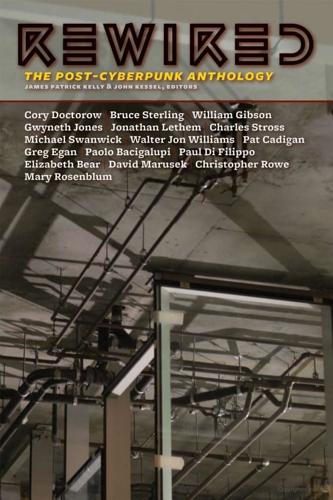
Rewired: The Post-Cyberpunk Anthology
by
James Patrick Kelly
and
John Kessel
Published 30 Sep 2007
When the three of them — painter, Crow, Owl — were stuffed into the rear door, Soma shouted, “Up those stairs, car!” In the front seat, there was a woman whose eyes seemed as large as saucers. commodores faulting headless people in the lick protocols compel reeling in, strengthening, temporarily abandoning telepresence locate an asset with a head asset with a head located Jenny-With-Grease-Beneath-Her-Fingernails was trying not to go crazy. Something was pounding at her head, even though she hadn’t tried to open it herself. Yesterday, she had been working a remote repair job on the beach, fixing a smashed window.

WTF?: What's the Future and Why It's Up to Us
by
Tim O'Reilly
Published 9 Oct 2017
But what is most exciting to me about this technology is not the LSD factor, but how augmented reality can change the way we work. You can imagine how augmented reality could enable workers to be “upskilled.” I’m particularly fond of imagining how the model used by Partners in Health could be turbocharged by augmented reality and telepresence. The organization provides free healthcare to people in poverty using a model in which community health workers recruited from the population being served are trained and supported in providing primary care. Doctors can be brought in as needed, but the bulk of care is provided by ordinary people.

Empire of AI: Dreams and Nightmares in Sam Altman's OpenAI
by
Karen Hao
Published 19 May 2025
In 2014, Quora had joined YC in the first batch under Altman’s presidency; in 2017, a year before D’Angelo’s board appointment, Altman had topped up YC’s investment into Quora, coleading an $85 million round of funding. In the announcement, Altman praised D’Angelo as one of “the smartest CEOs in Silicon Valley.” “And he has a very long-term focus, which has become a rare commodity in tech companies these days,” Altman said. McCauley had joined the board later in 2018. An entrepreneur who had cofounded a telepresence robotics startup and was running a 3D urban simulation company, she had connected with Altman through her mentor, Alan Kay, and also knew Holden Karnofsky. McCauley was well-respected in the AI safety community and would serve on the board of the AI safety research nonprofit Centre for the Governance of AI and for a time on the board of the Effective Ventures Foundation, a UK-based organization that oversees the popular EA podcast 80,000 Hours.

The Singularity Is Near: When Humans Transcend Biology
by
Ray Kurzweil
Published 14 Jul 2005
The human brain is about 75,000 times heavier than the 0.02 grams of neurons in this portion of the retina, resulting in an estimate of about 1014 (100 trillion) instructions per second for the entire brain.37 Another estimate comes from the work of Lloyd Watts and his colleagues on creating functional simulations of regions of the human auditory system, which I discuss further in chapter 4.38 One of the functions of the software Watts has developed is a task called "stream separation," which is used in teleconferencing and other applications to achieve telepresence (the localization of each participant in a remote audio teleconference), To accomplish this, Watts explains, means "precisely measuring the time delay between sound sensors that are separated in space and that both receive the sound." The process involves pitch analysis, spatial position, and speech cues, including language-specific cues.
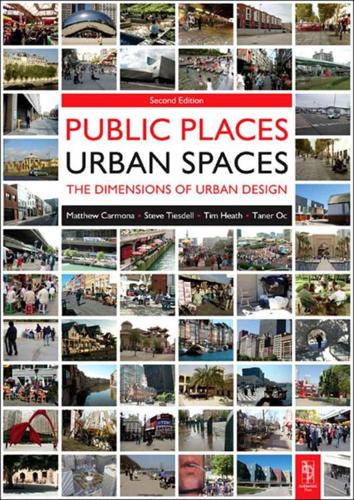
Public Places, Urban Spaces: The Dimensions of Urban Design
by
Matthew Carmona
,
Tim Heath
,
Steve Tiesdell
and
Taner Oc
Published 15 Feb 2010
As Hall (1998: 943) argues,‘… new technology shapes new opportunities, to create new industries and transform old ones, to present new ways of organising firms or entire societies, to transform the potential for living; but it does not compel these changes.’(Figure 2.6). FIGURE 2.6 Paris (Image: Steve Tiesdell). Castells (1989: 1–2) noted how ‘intensely urban’ Paris was ‘… the success story for the use of home-based telematic systems.’ Mitchell (1995: 169) asked whether Paris has ‘… something that telepresence cannot match?’ Universal mobility might result in an almost complete loss of significance associated with (geographic) centrality and traditional concepts of location. This argument is not wholly persuasive because place quality also matters. As location in space (geographical location) matters less in locational decisions, the quality of local ‘place’ starts to matter more.

Artificial Intelligence: A Modern Approach
by
Stuart Russell
and
Peter Norvig
Published 14 Jul 2019
Savioke has put robots in hotels delivering products like towels or toothpaste to your room. The Helpmate and TUG robots carry food and medicine in hospitals (Figure 26.34(b)), while Diligent Robotics’ Moxi robot helps out nurses with back-end logistical responsibilities. Co-Bot roams the halls of Carnegie Mellon University, ready to guide you to someone’s office. We can also use telepresence robots like the Beam to attend meetings and conferences remotely, or check in on our grandparents. Autonomous cars: Some of us are occasionally distracted while driving, by cell phone calls, texts, or other distractions. The sad result: more than a million people die every year in traffic accidents.
…
D., 638, 1114 Taylor, C., 1030, 1092 Taylor, G., 329, 1114 Taylor, M., 357, 1113 Taylor, P., 900, 1114 Taylor, R., 986, 1104 Taylor, W., 190, 1090 Taylor expansion, 942 TD-GAMMON (backgammon program), 37, 224, 867 technological unemployment, 983, 1049 teddy bear, 1033 Tedrake, R., 986, 1114 Tegmark, M., 838, 1110 Teh, Y. W., 516, 837, 1099, 1108 telephone, 914 telepresence robots, 978 Teller, A., 160, 475, 1106 Teller, E., 160, 475, 1106 Teller, S., 984, 986, 1088, 1114 Tellex, S., 986, 1114 Templeton Foundation, 1037 temporal-difference learning, 844–848, 869 temporal inference, 483–491 temporal invariance, 811 temporal logic, 273 temporal projection, 267 temporal reasoning, 134–142, 255–264, 340–343, 479–517 Tenenbaum, J.
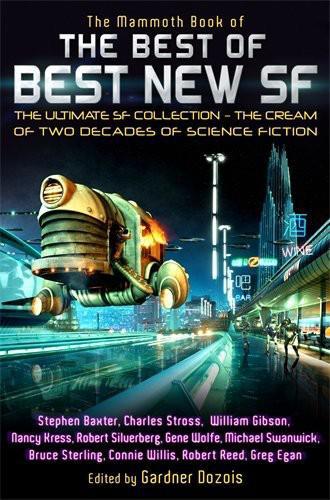
The Best of Best New SF
by
Gardner R. Dozois
Published 1 Jan 2005
“My work said nothing about the cosmos that the cosmos wasn’t already capable of saying for itself. More importantly, it said nothing about me. So what if I walked in vacuum, or swam in seas of liquid nitrogen? So what if I could see ultraviolet photons, or taste electrical fields? The modifications I inflicted upon myself were gruesome and extreme. But they gave me nothing that a good telepresence drone couldn’t offer any artist.” “I think you’re being a little harsh on yourself,” I said. “Not at all. I can say this now because I know that I did eventually create something worthwhile. But when it happened it was completely unplanned.” “You mean the blue stuff?” “The blue stuff,” he said, nodding.